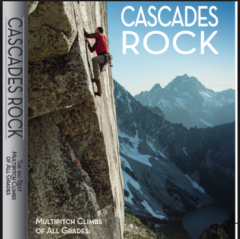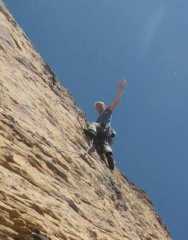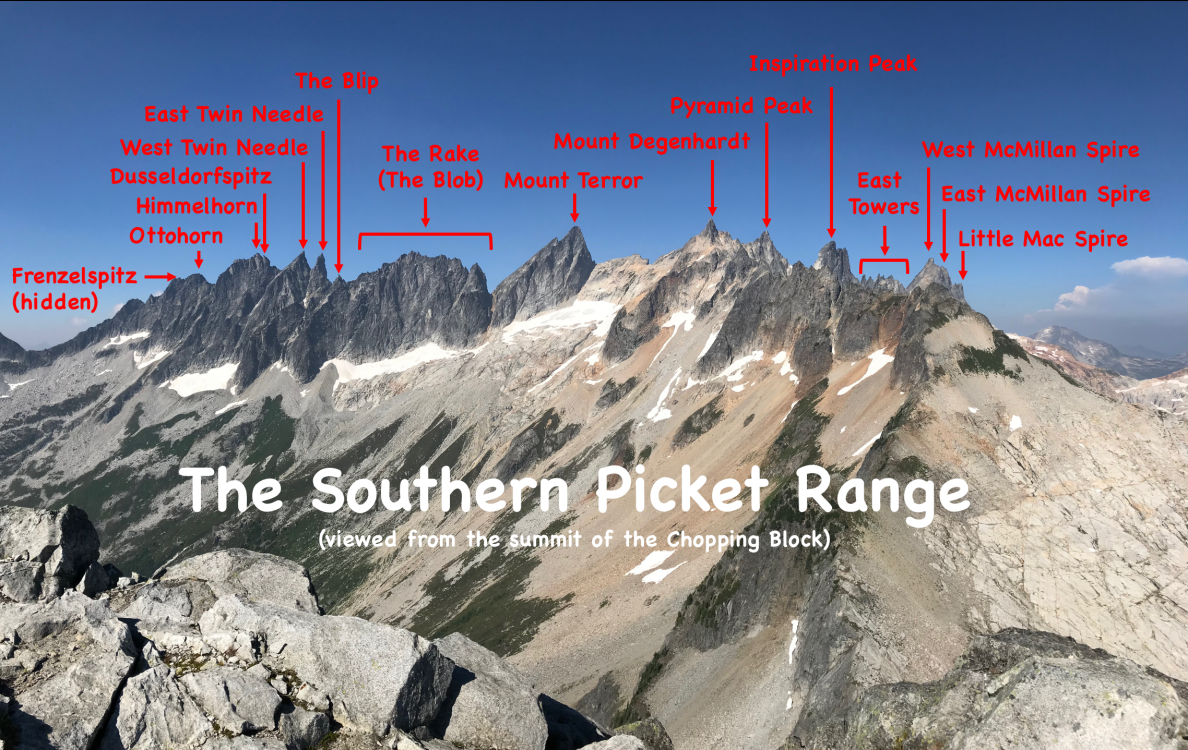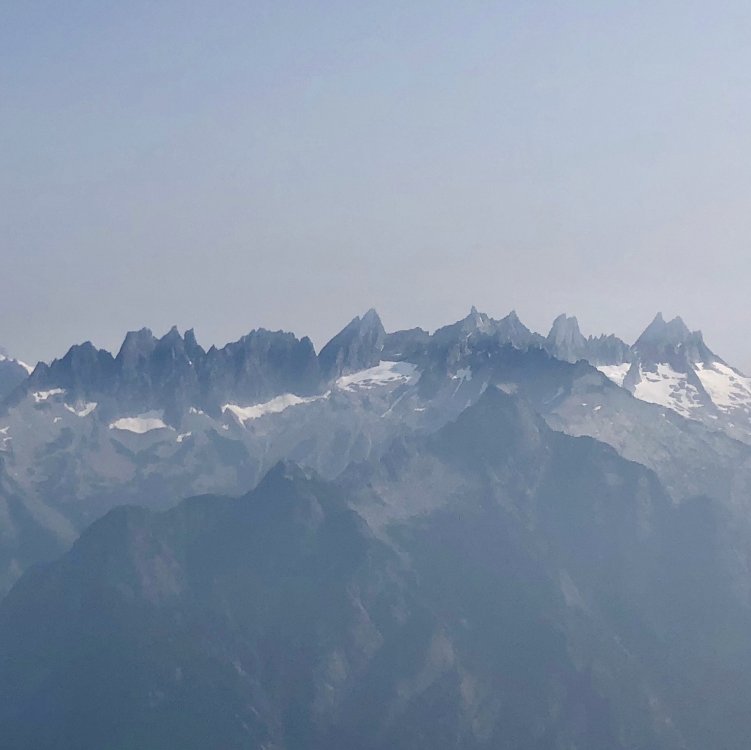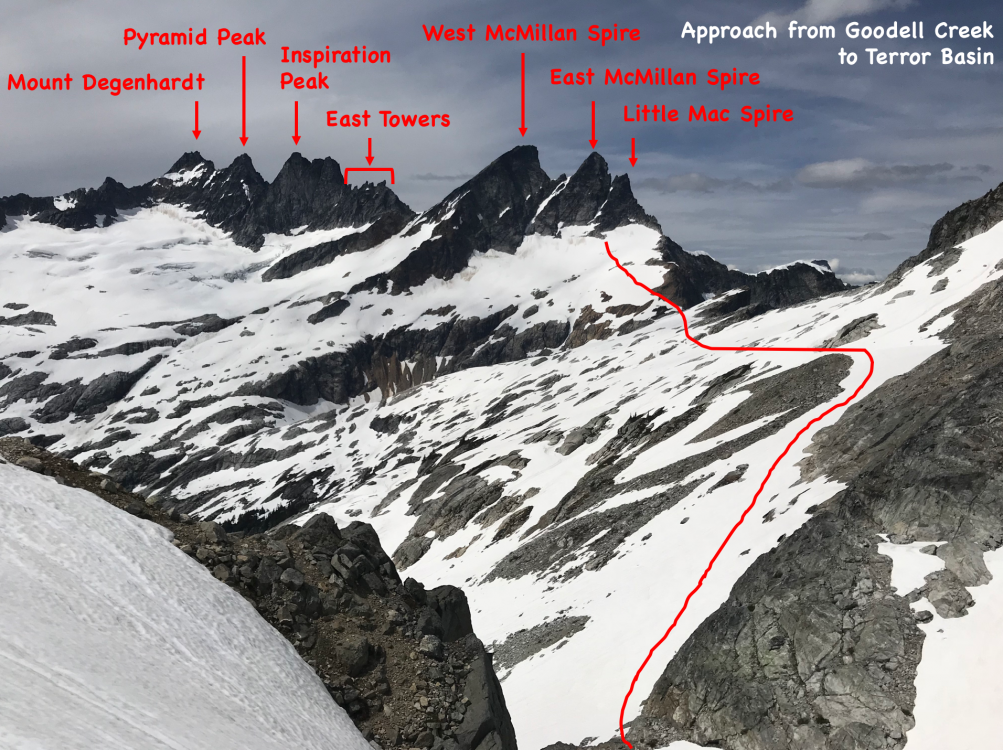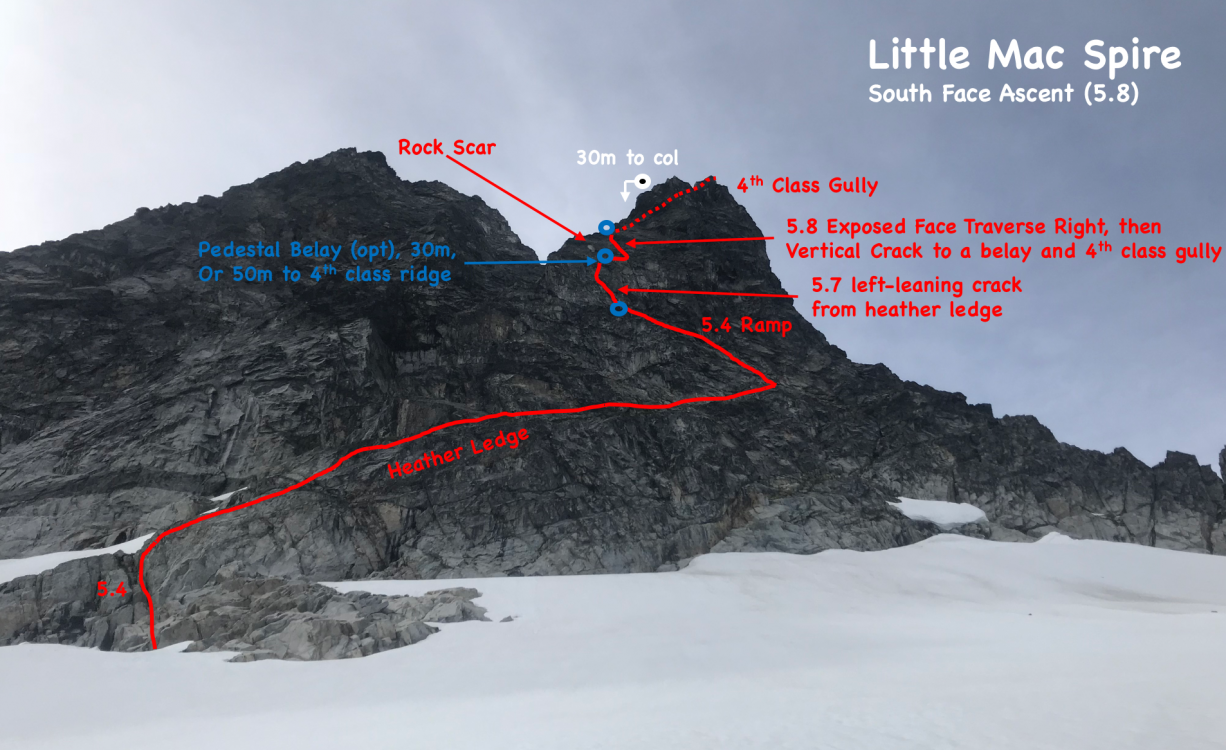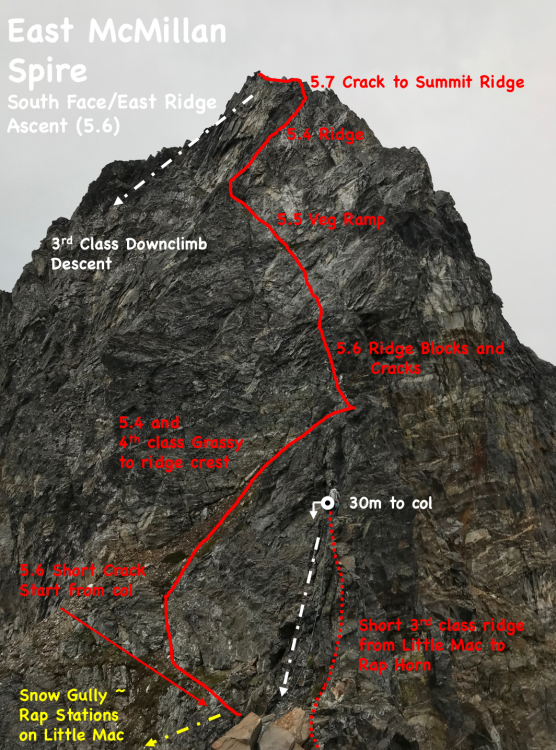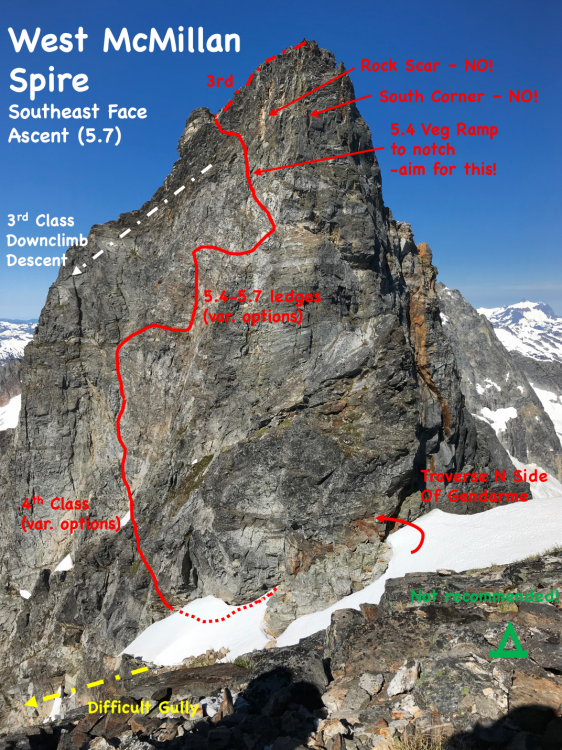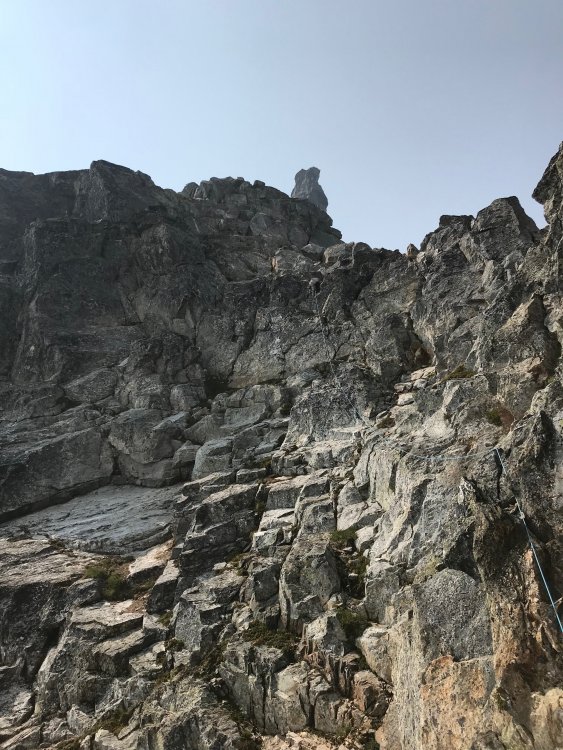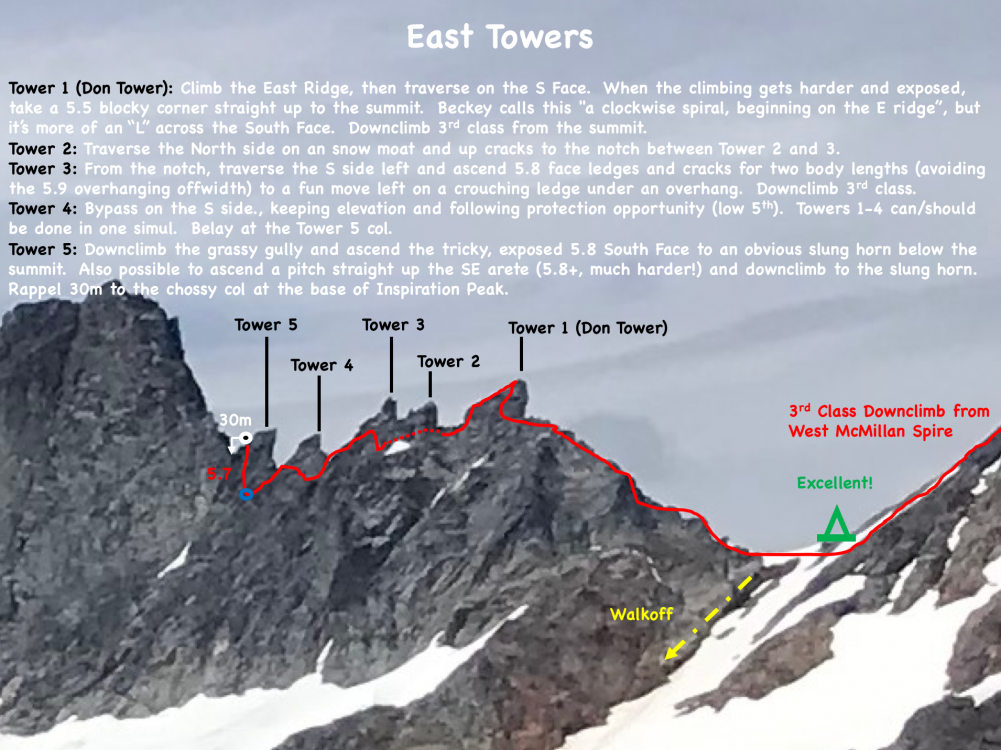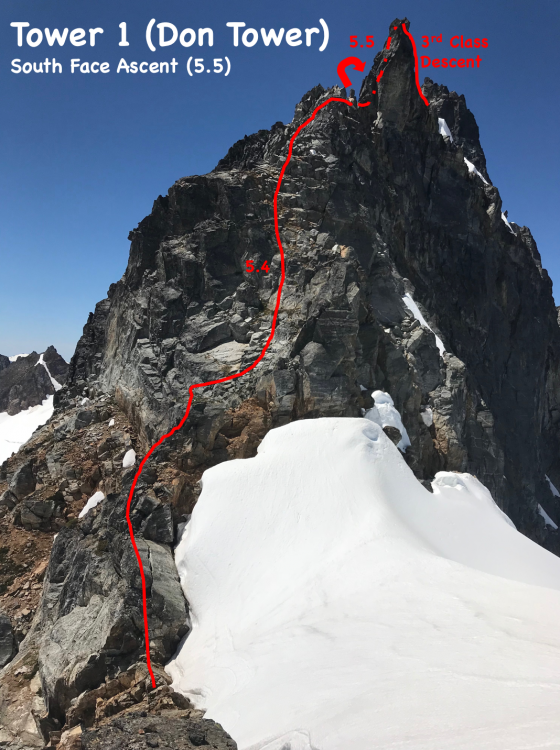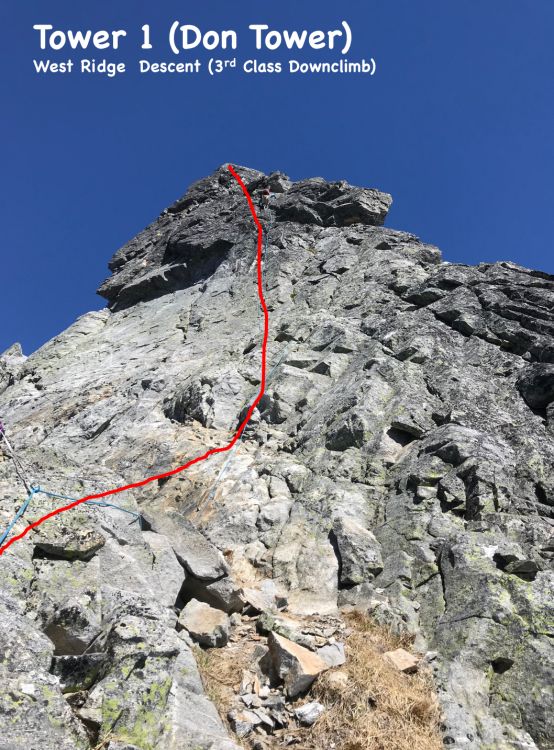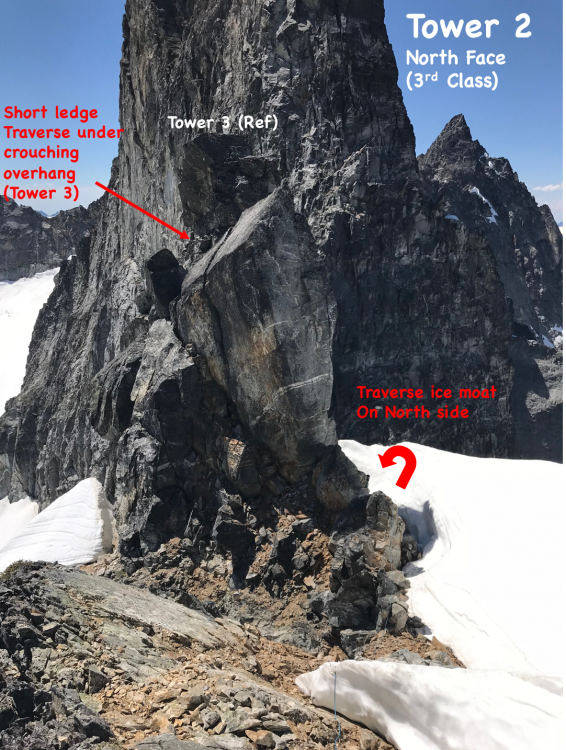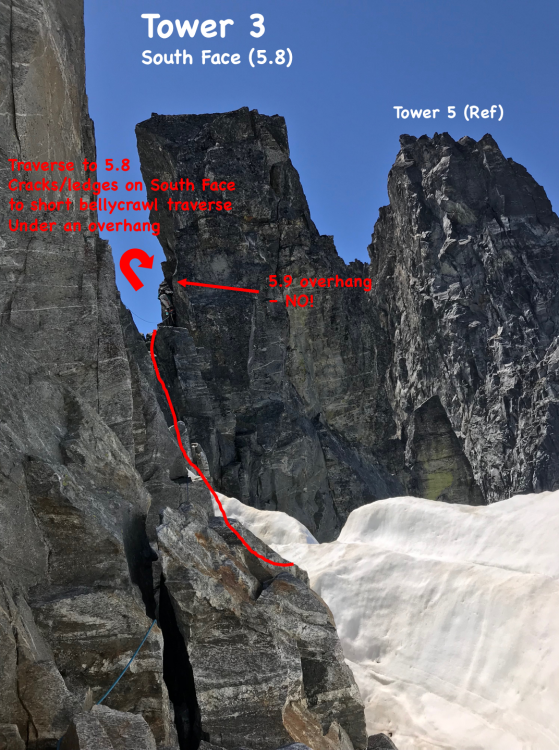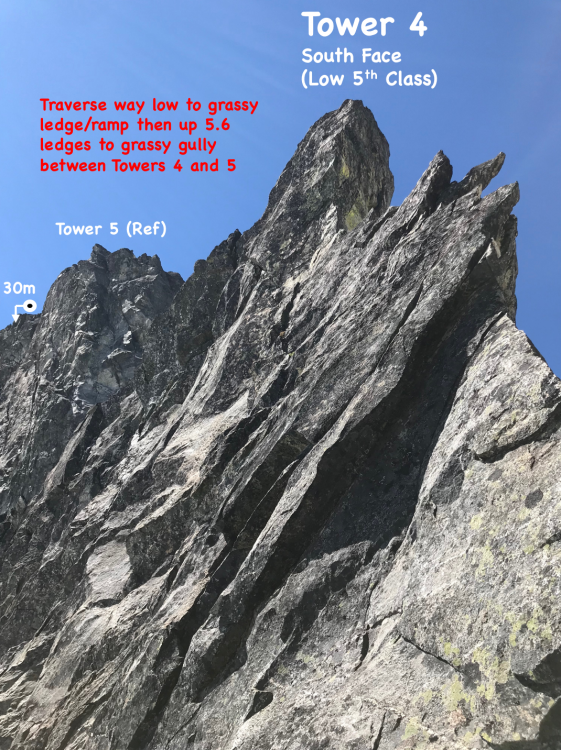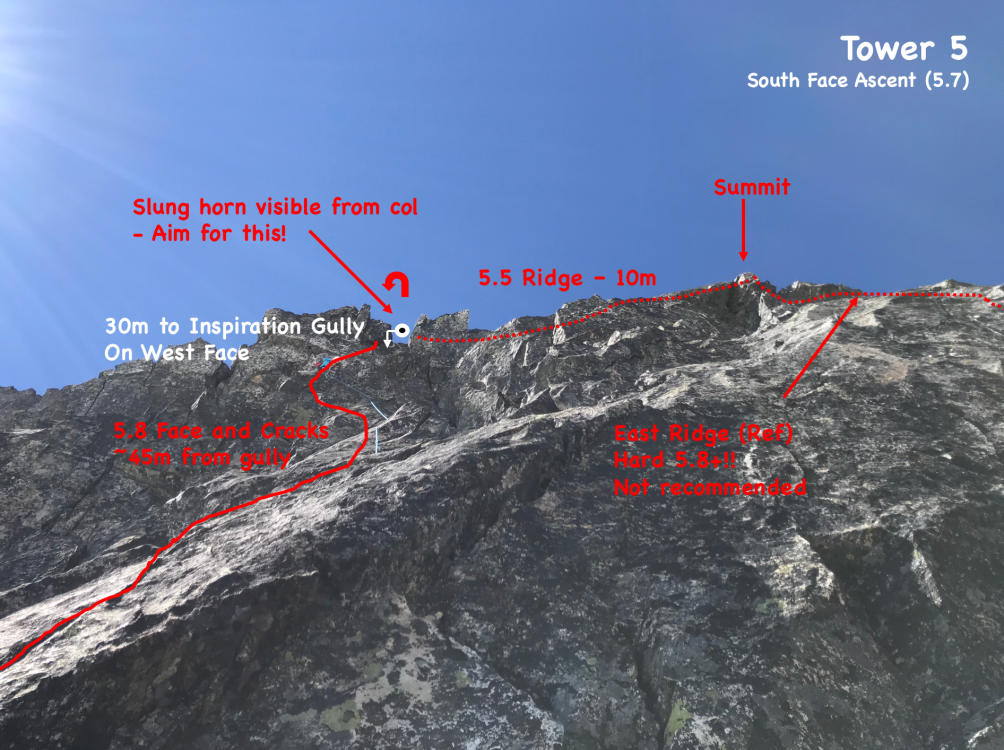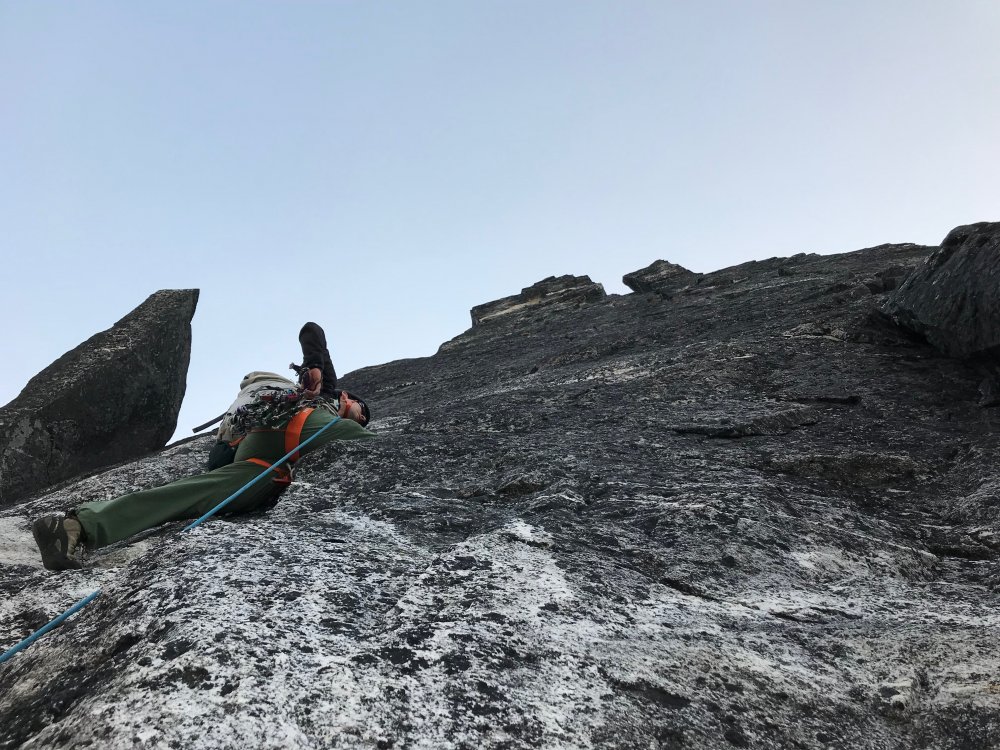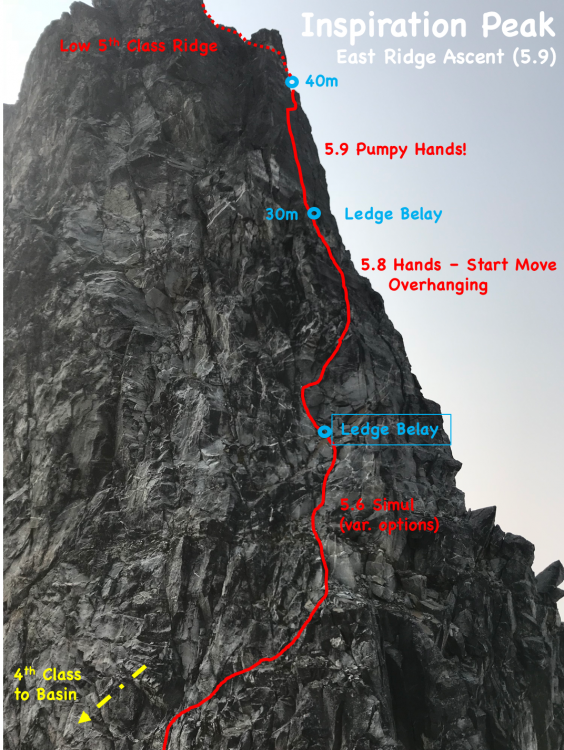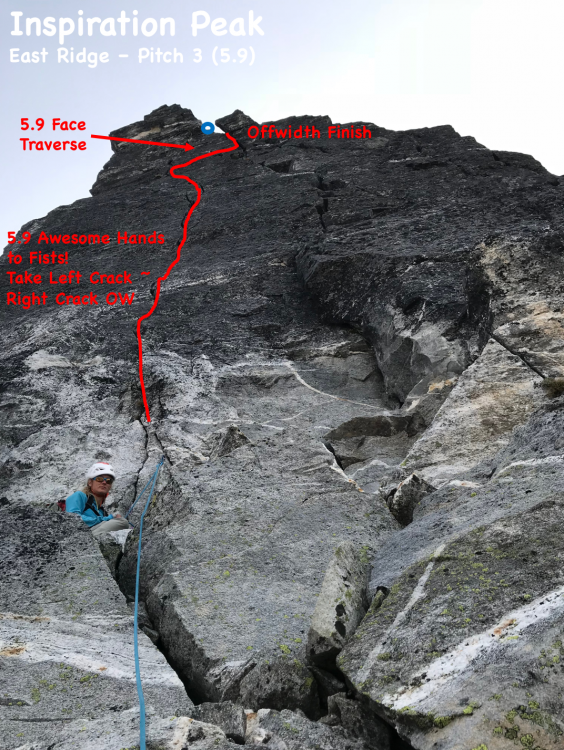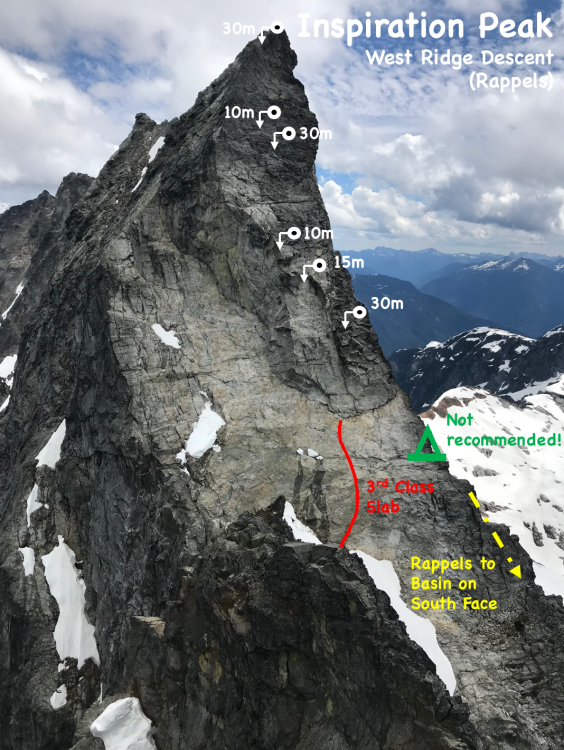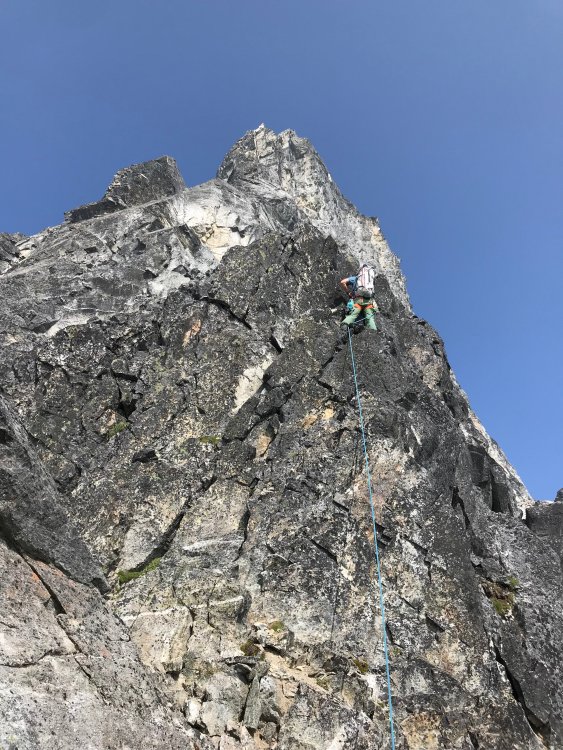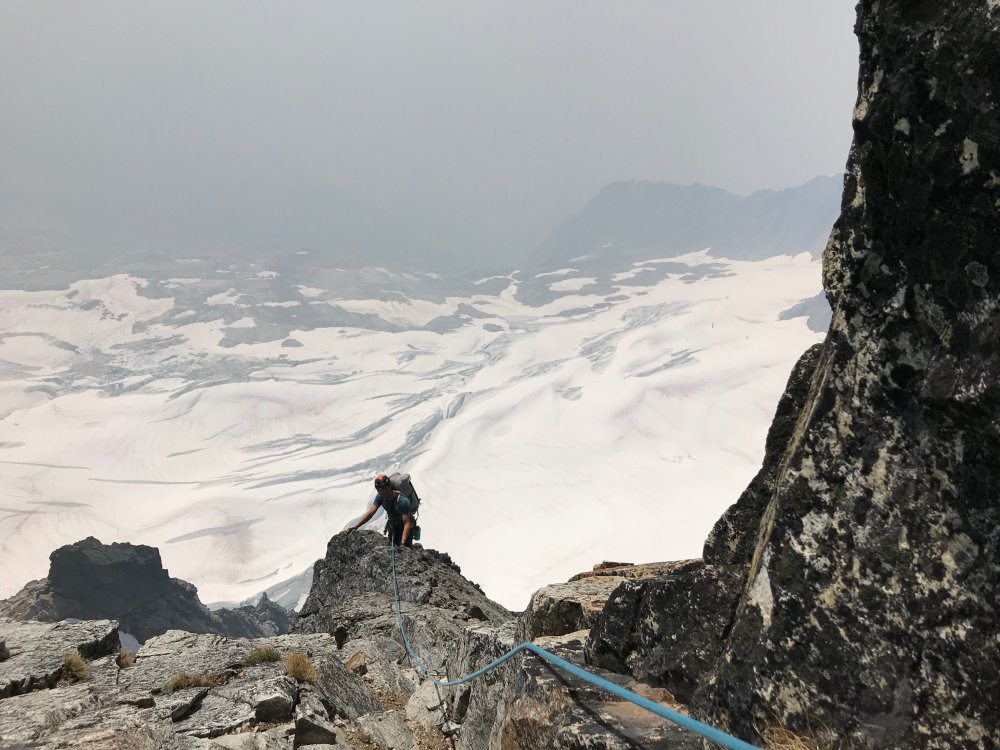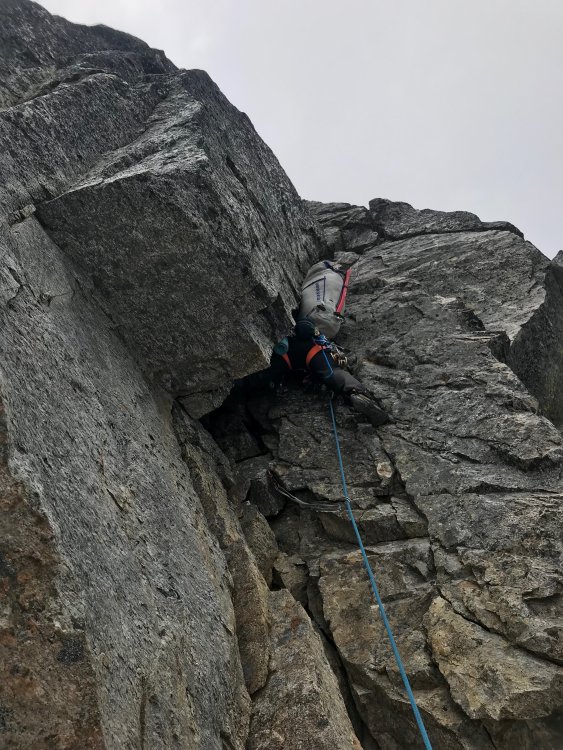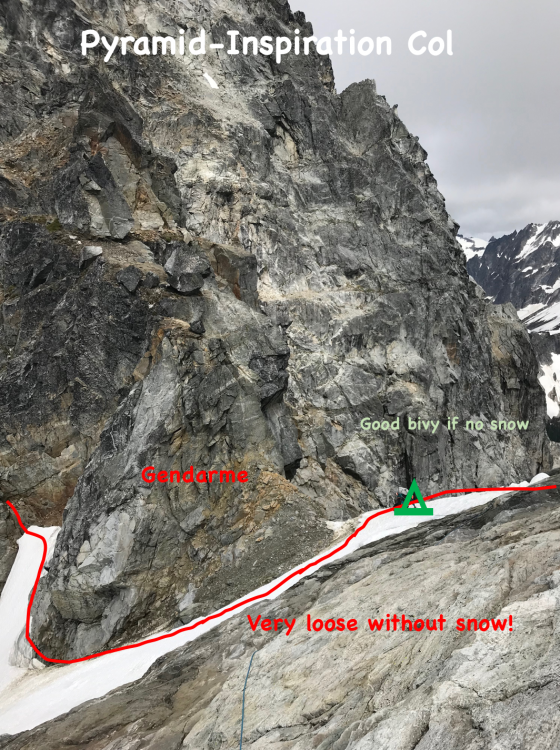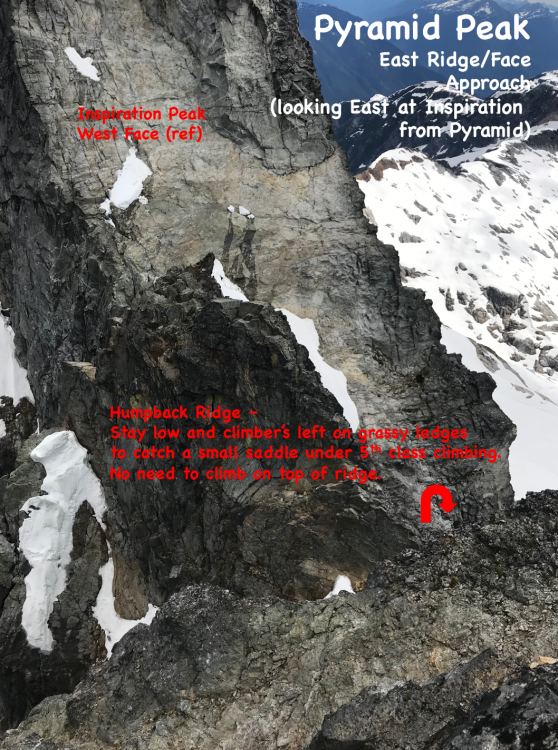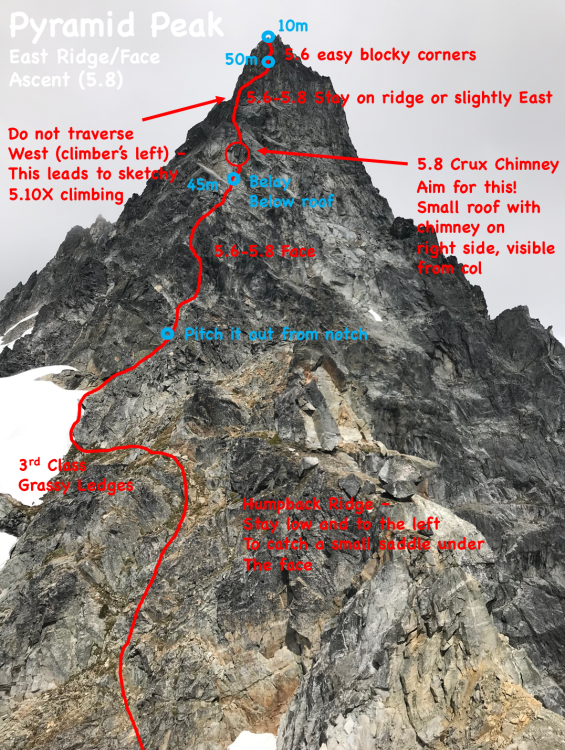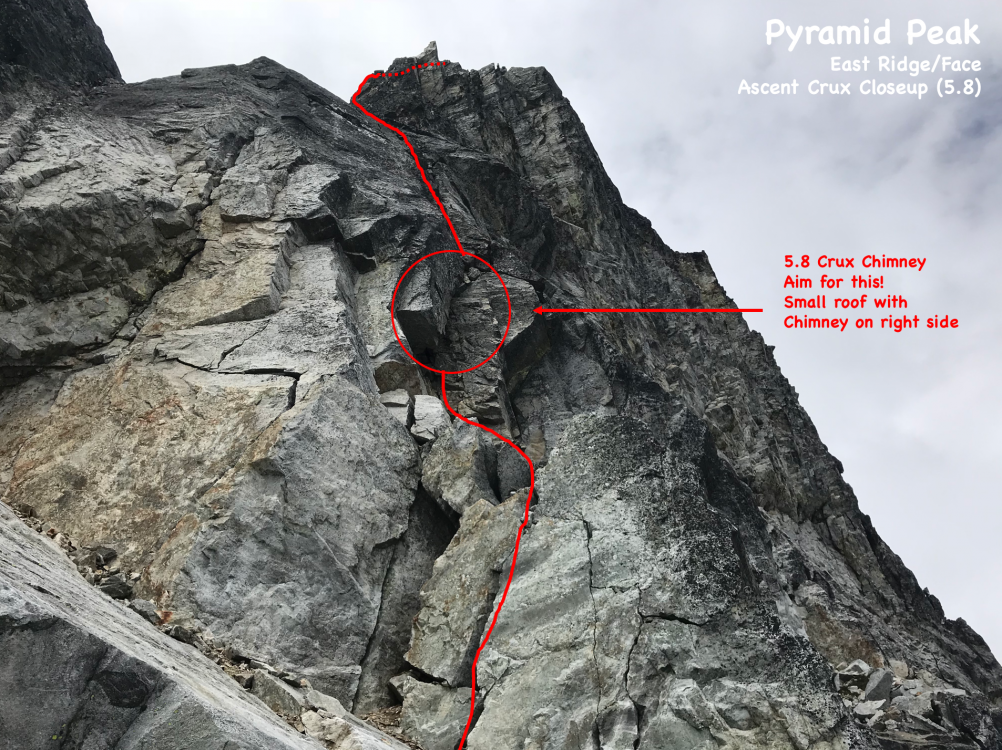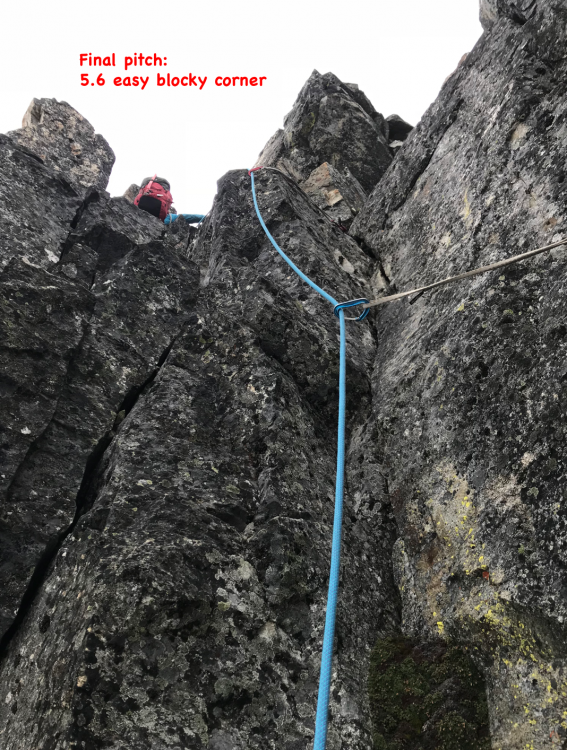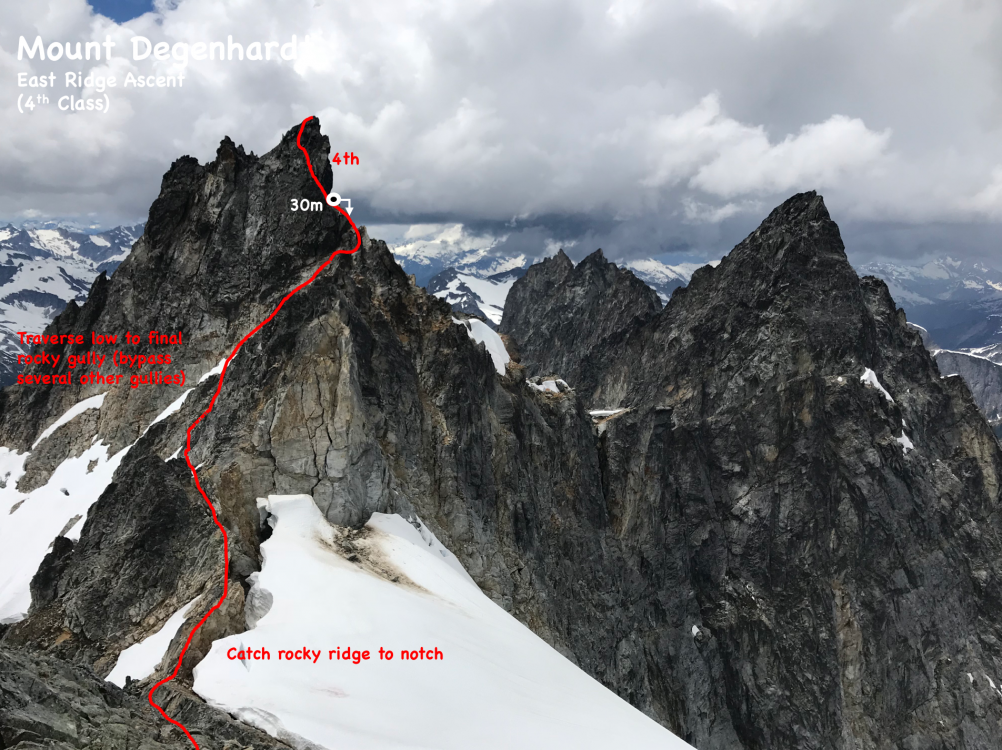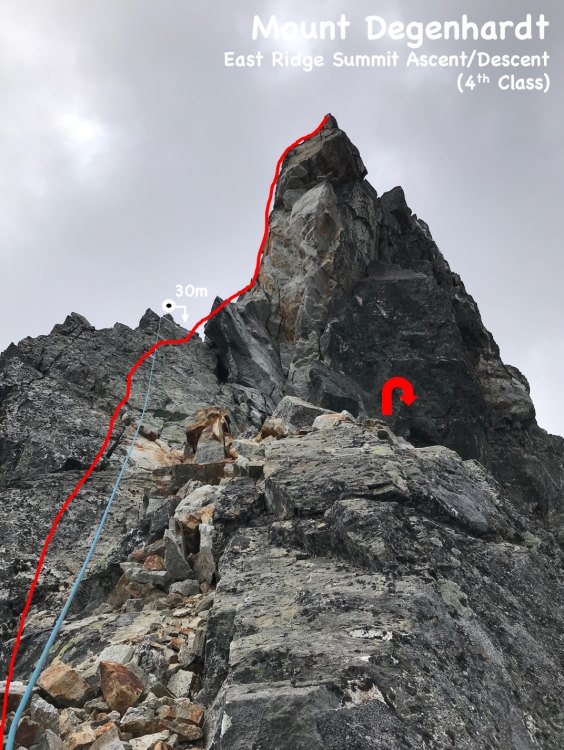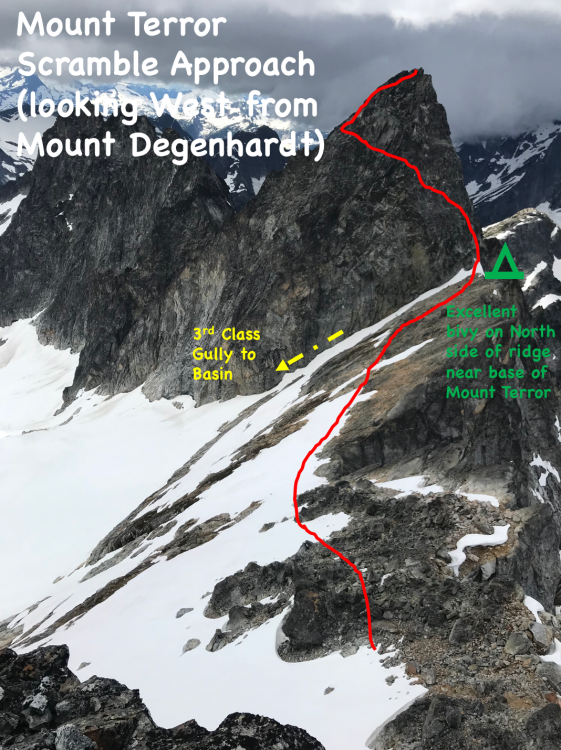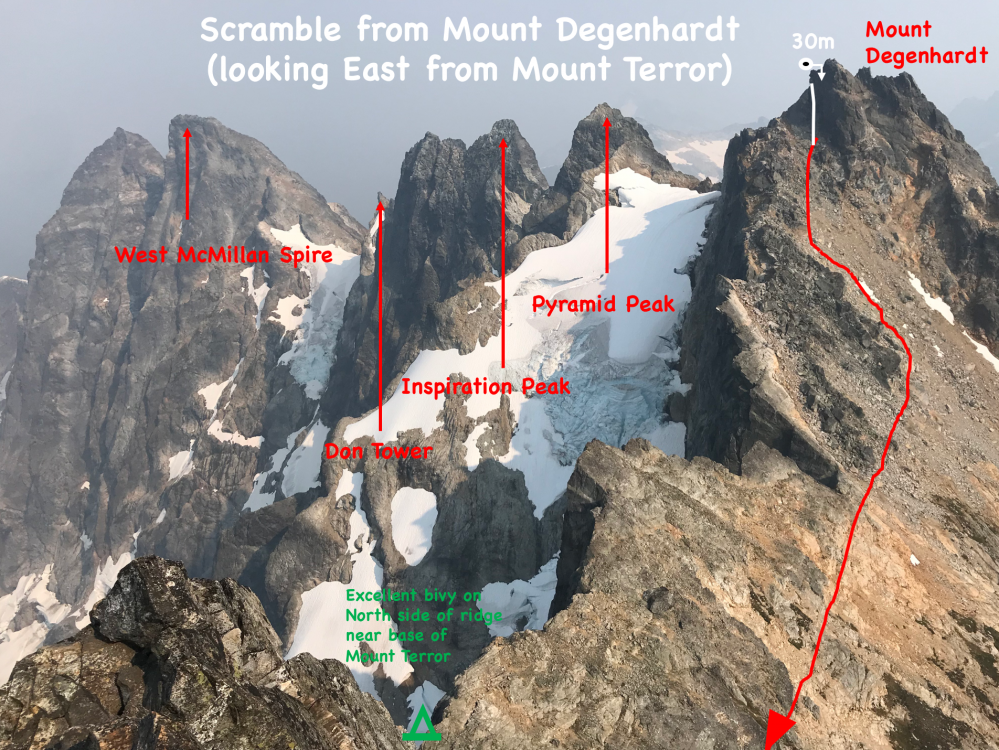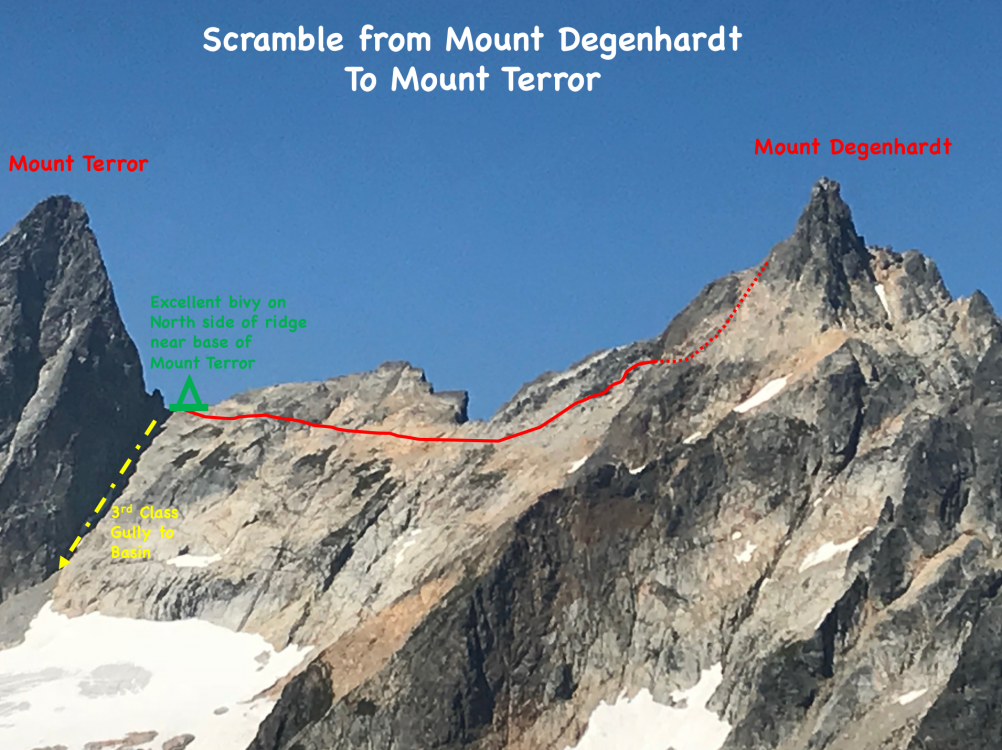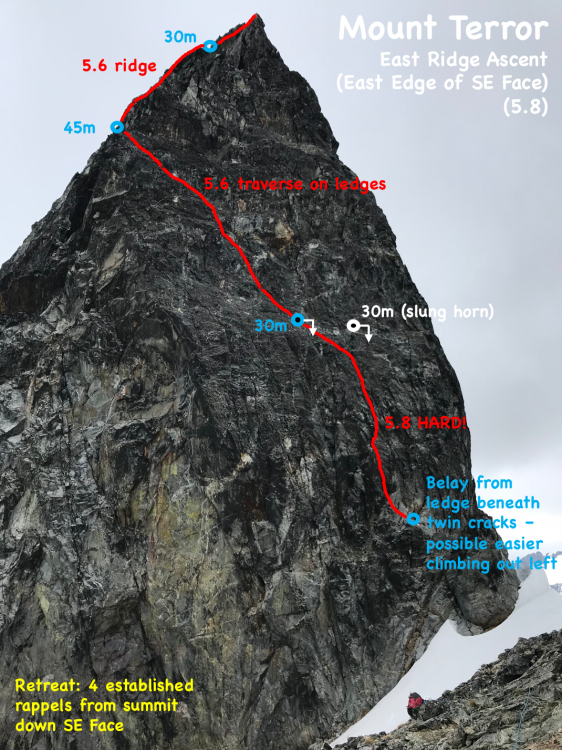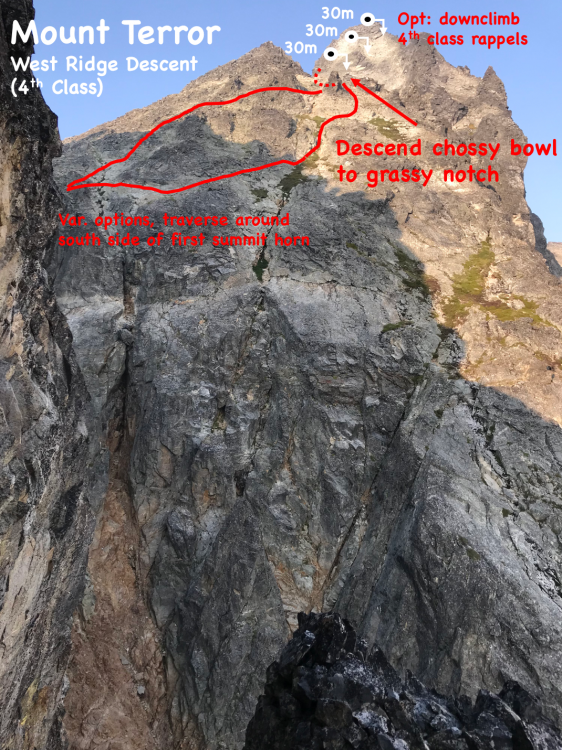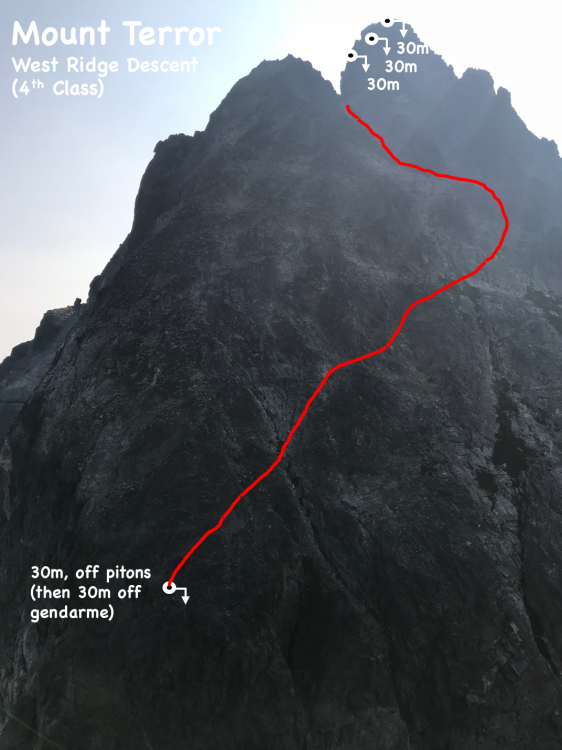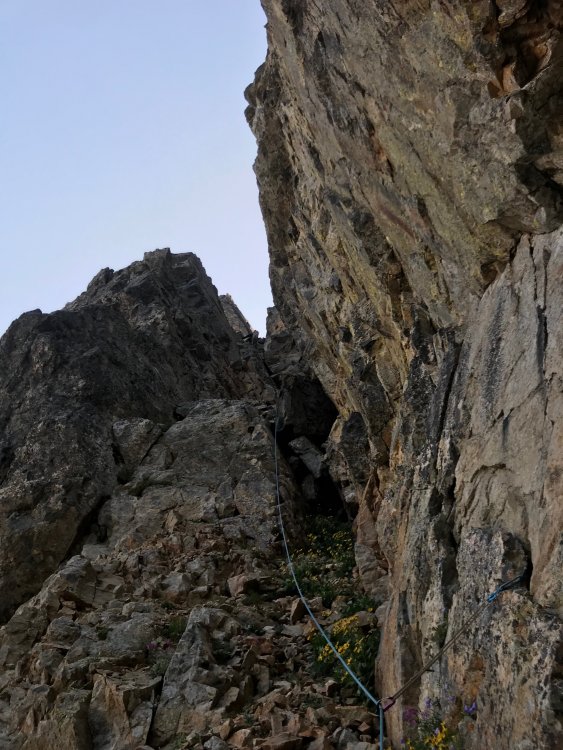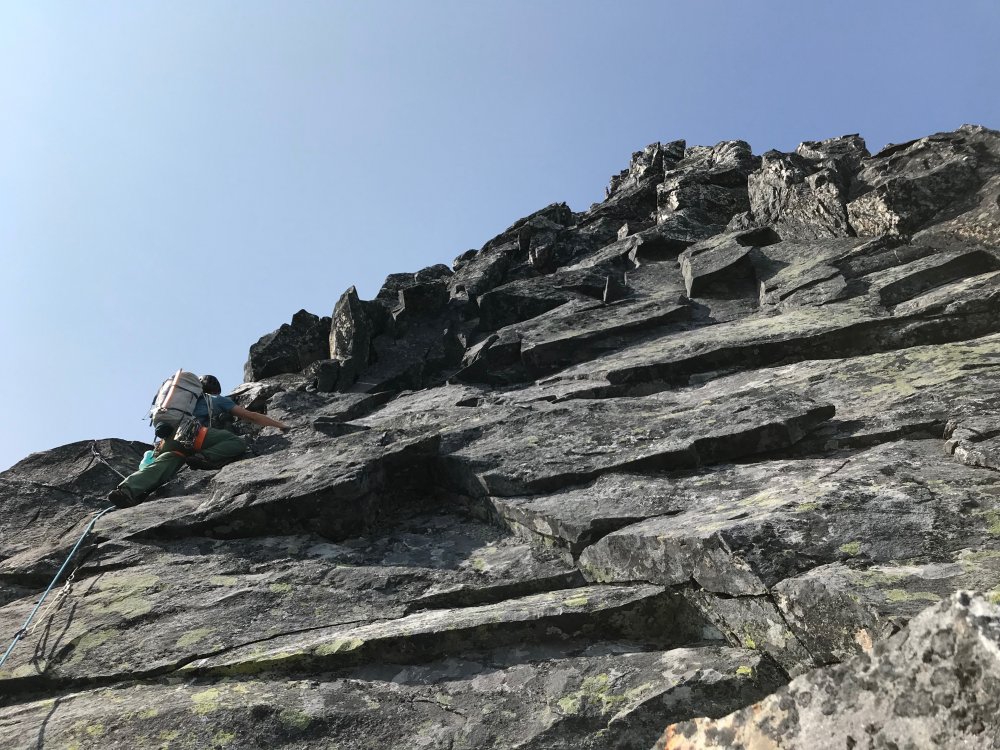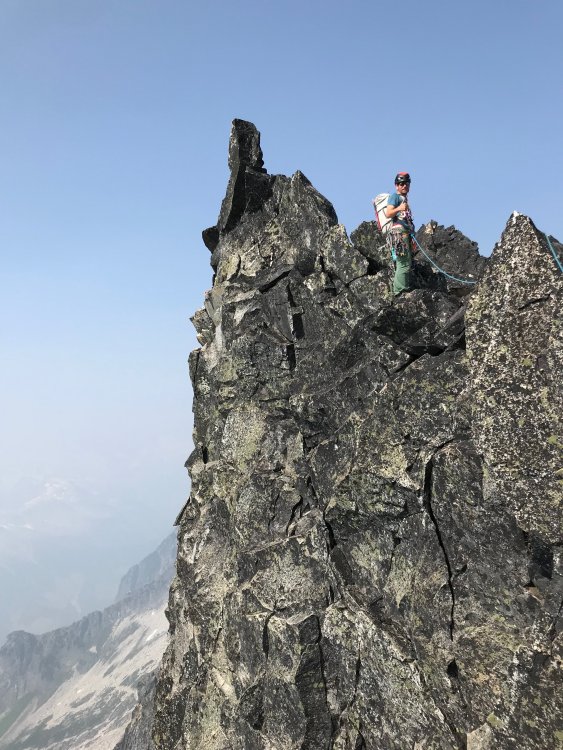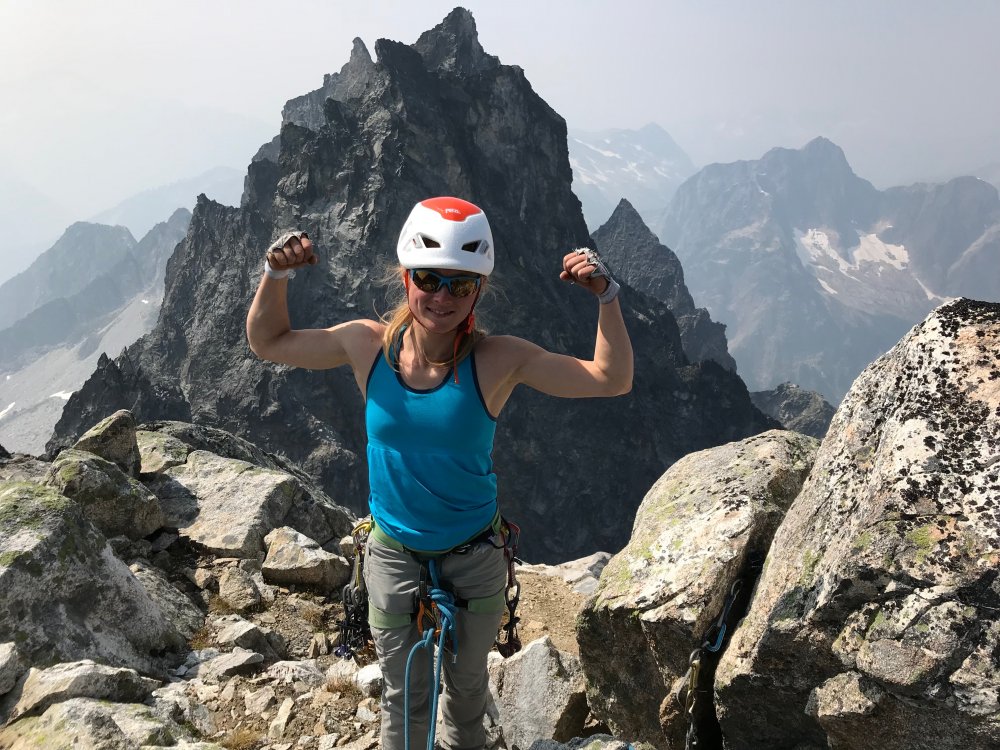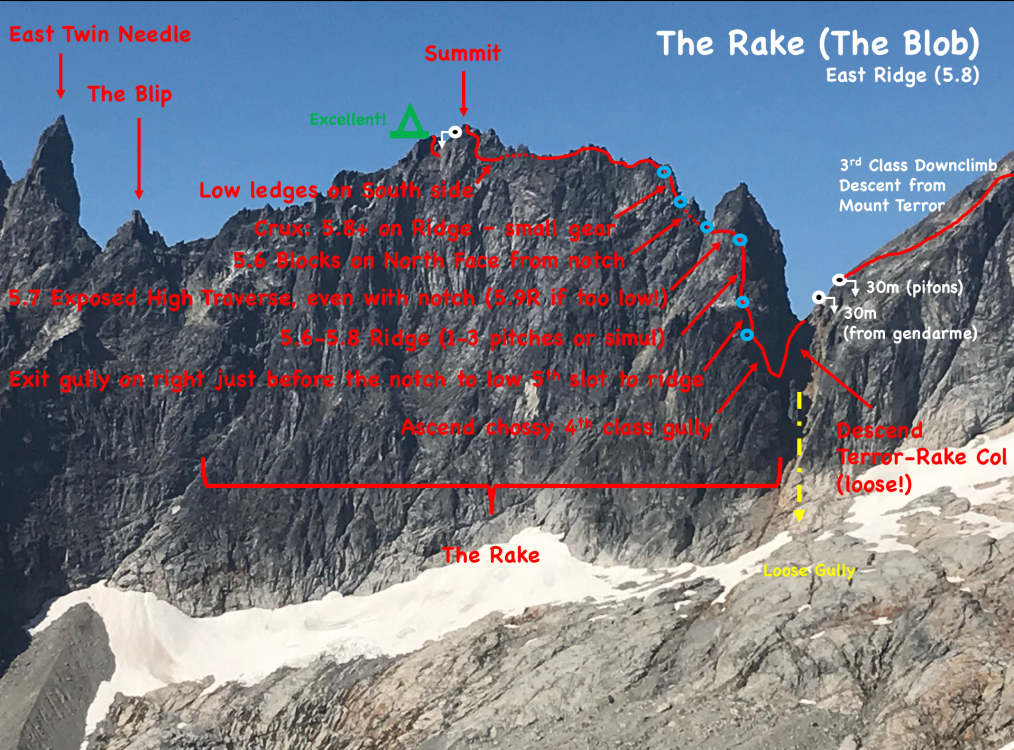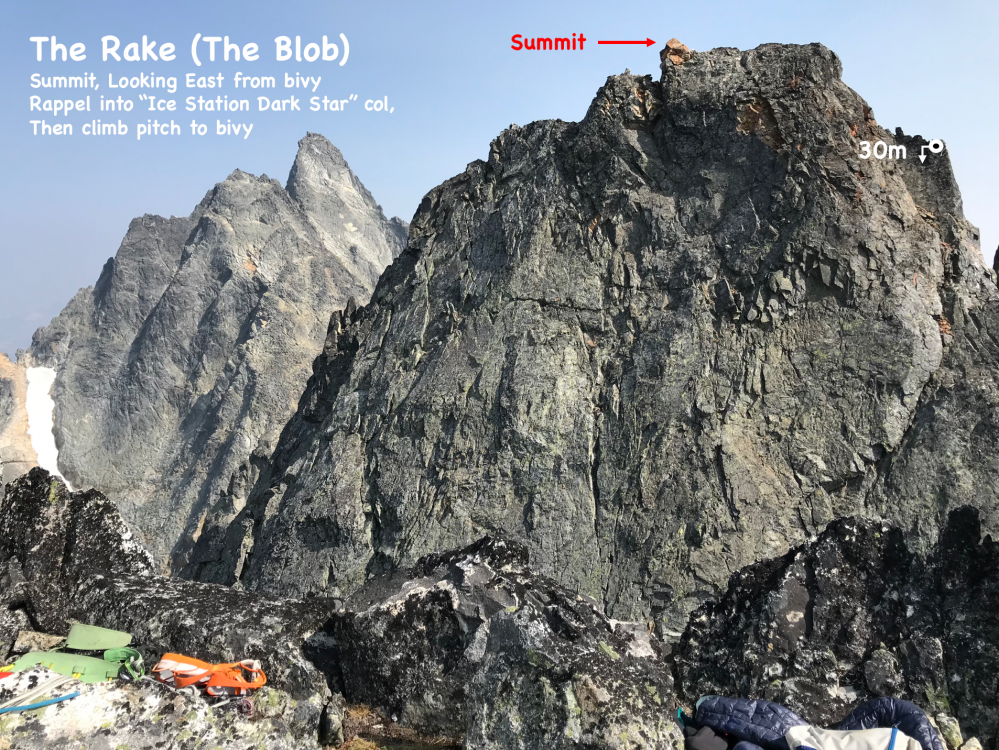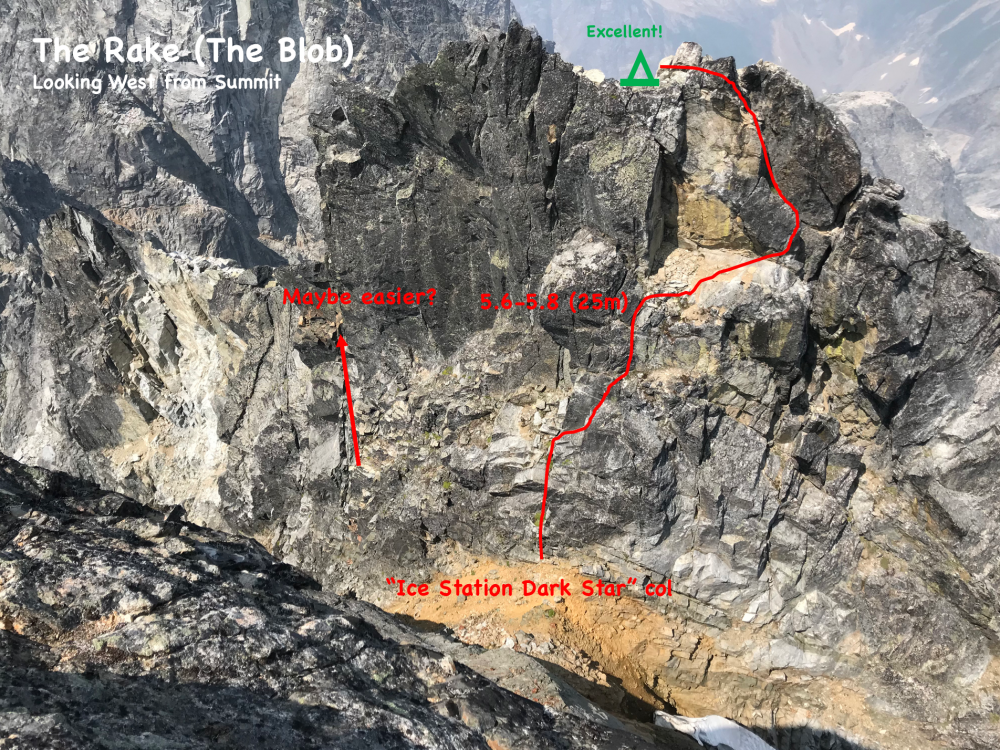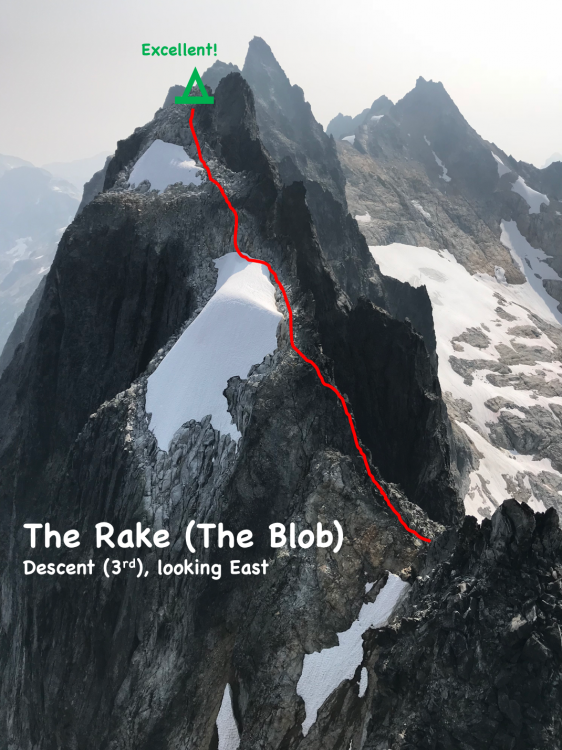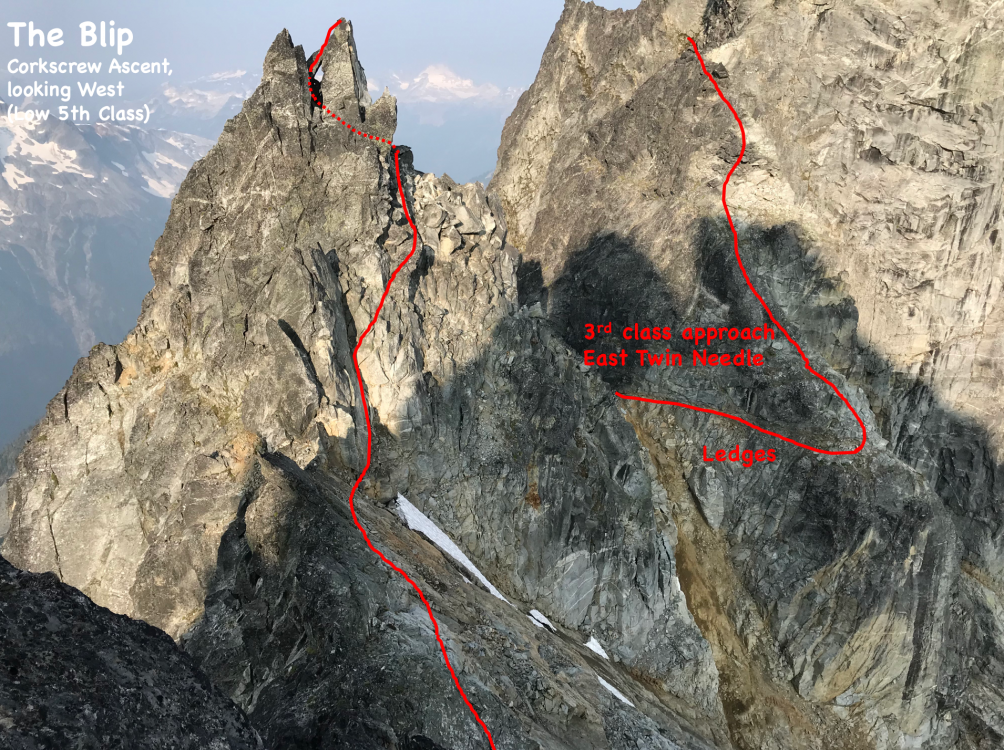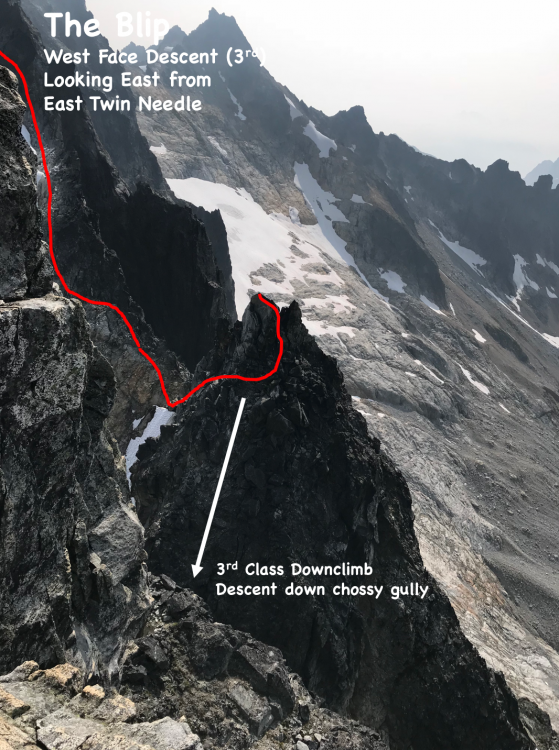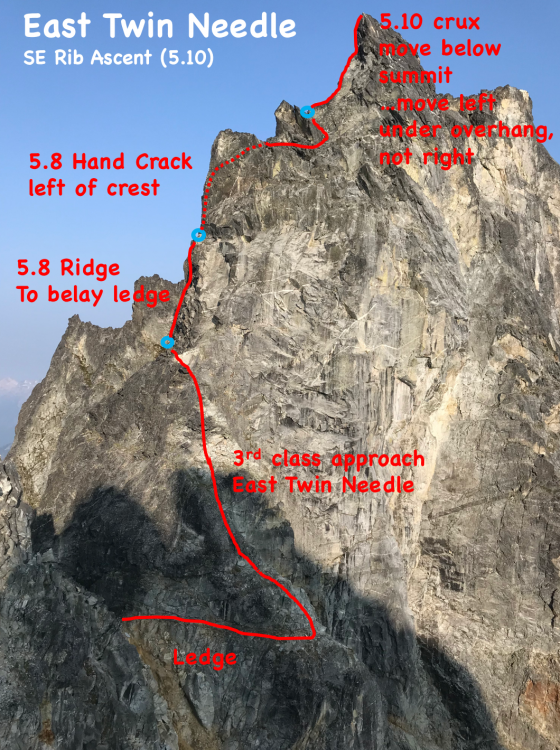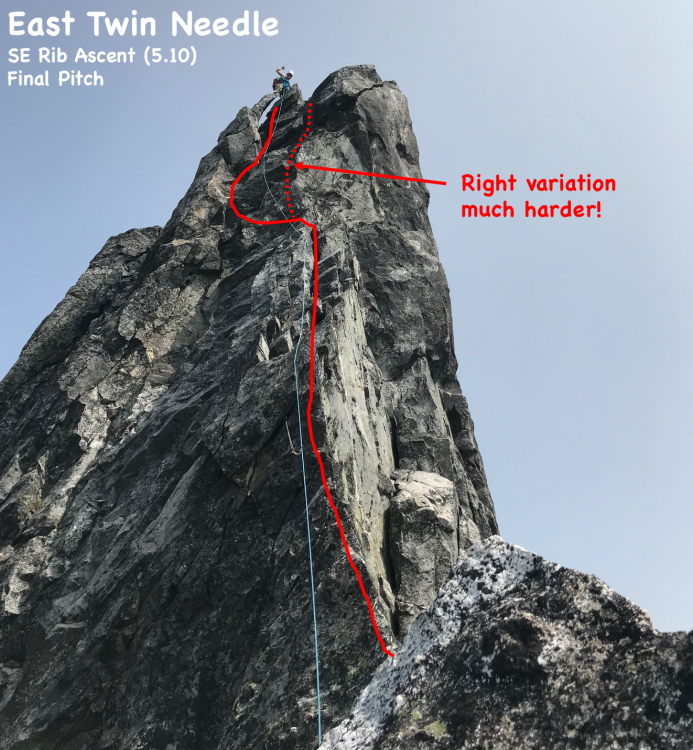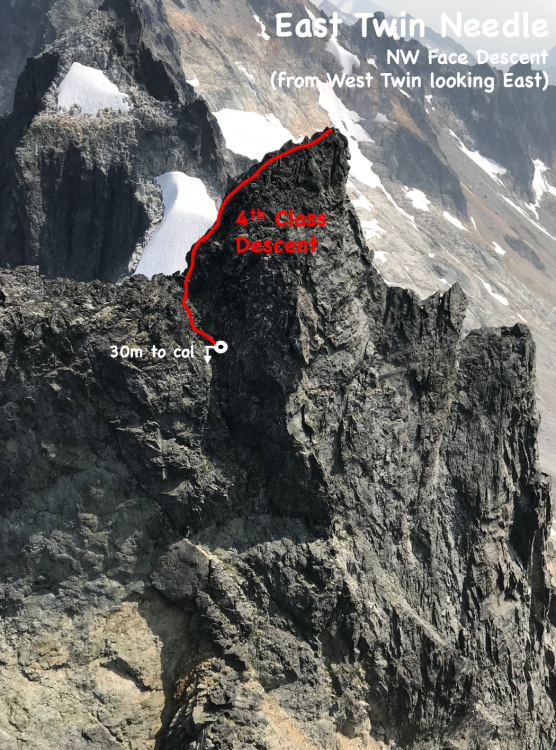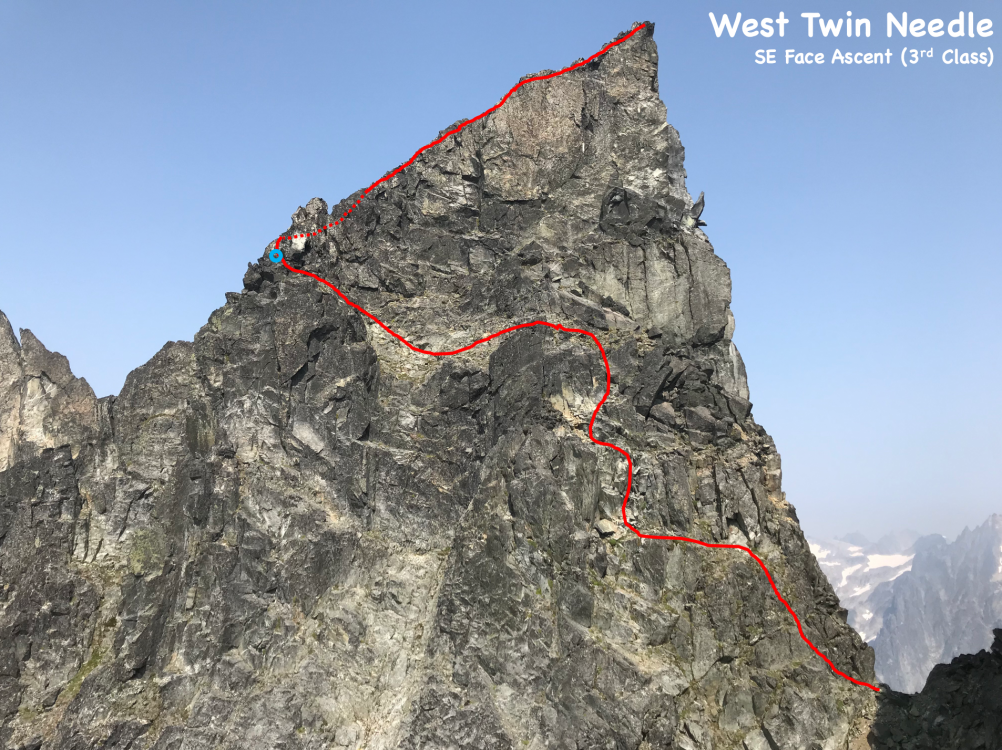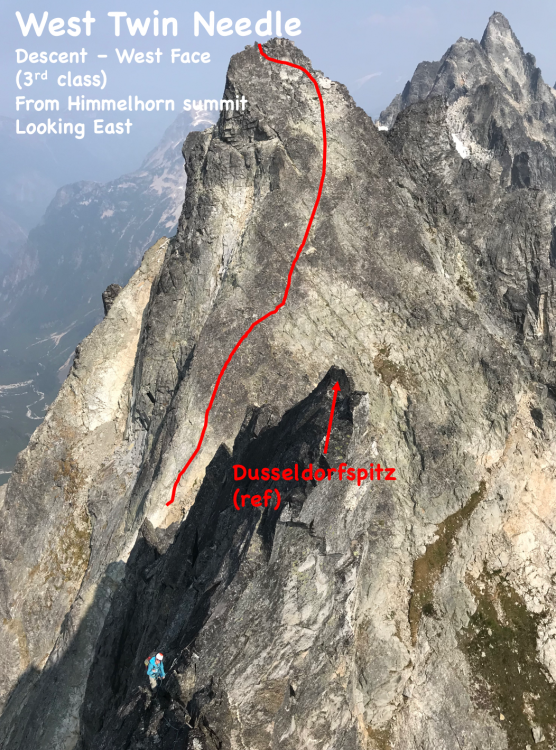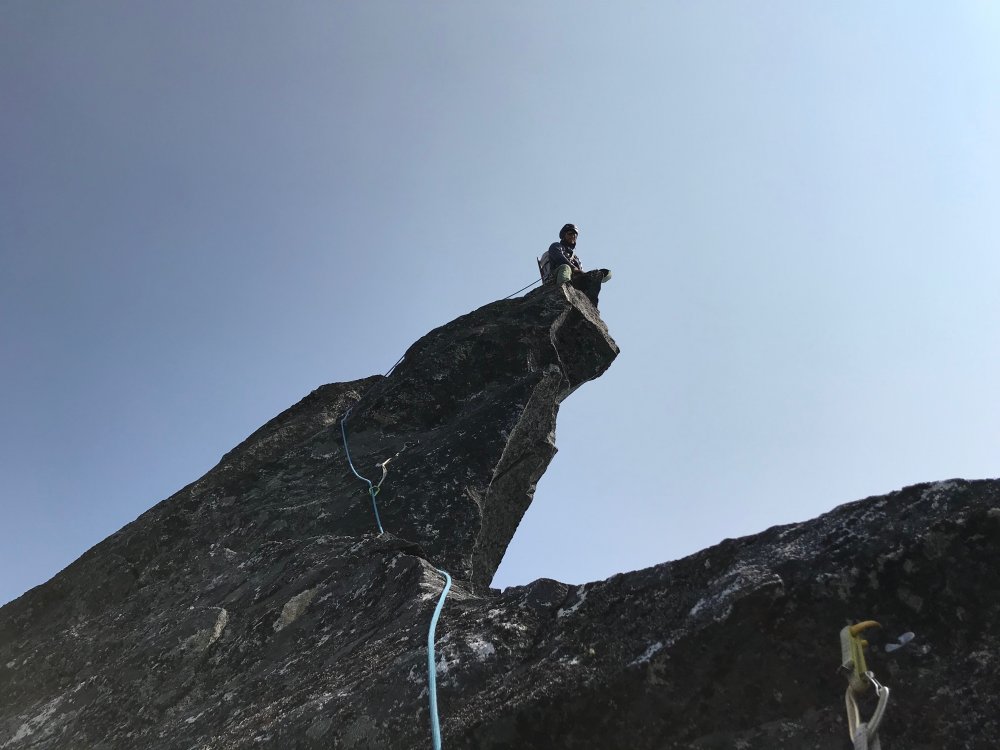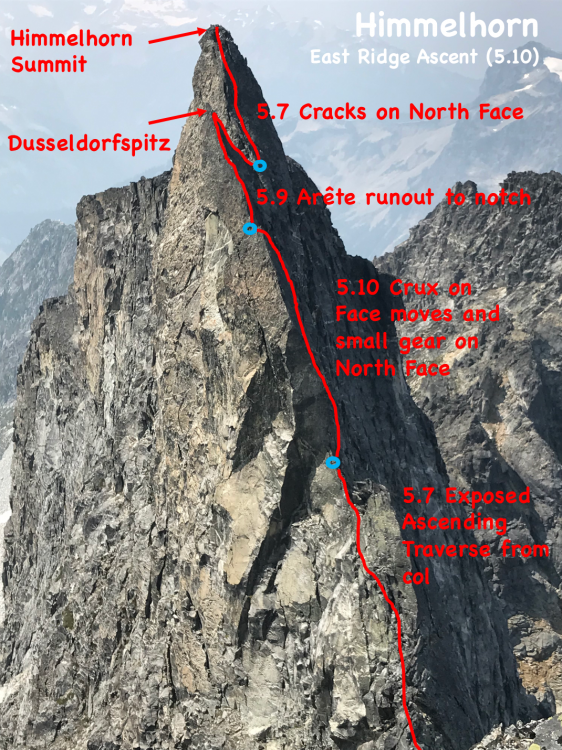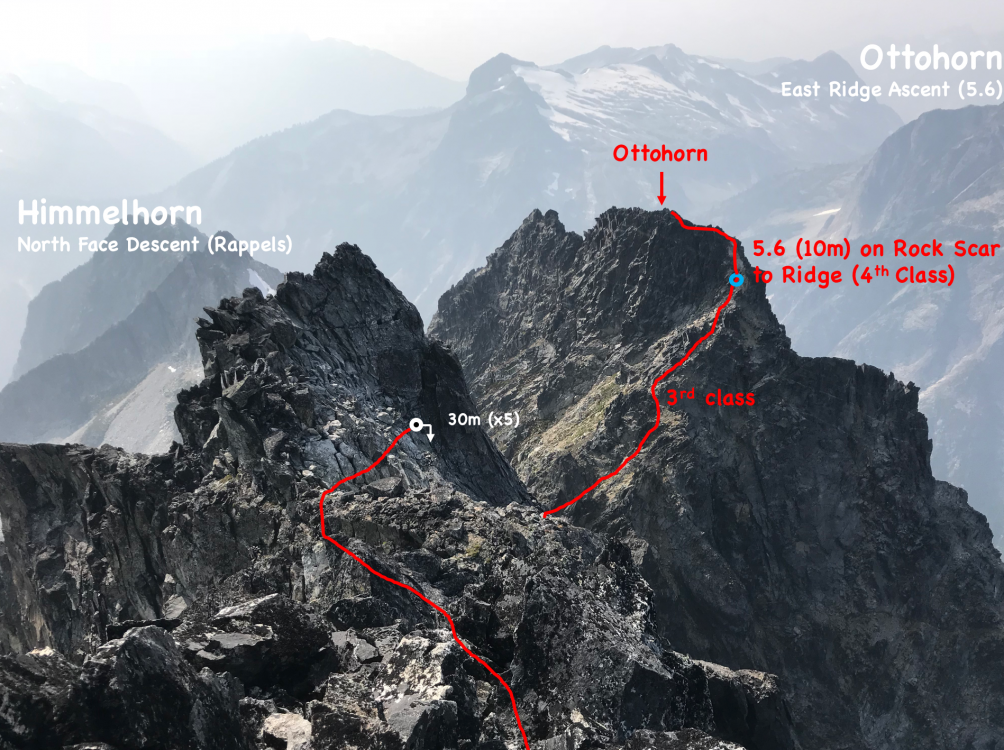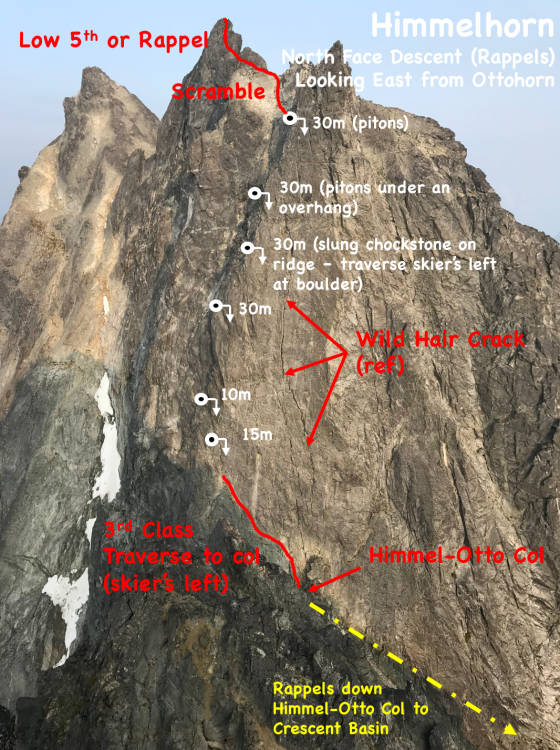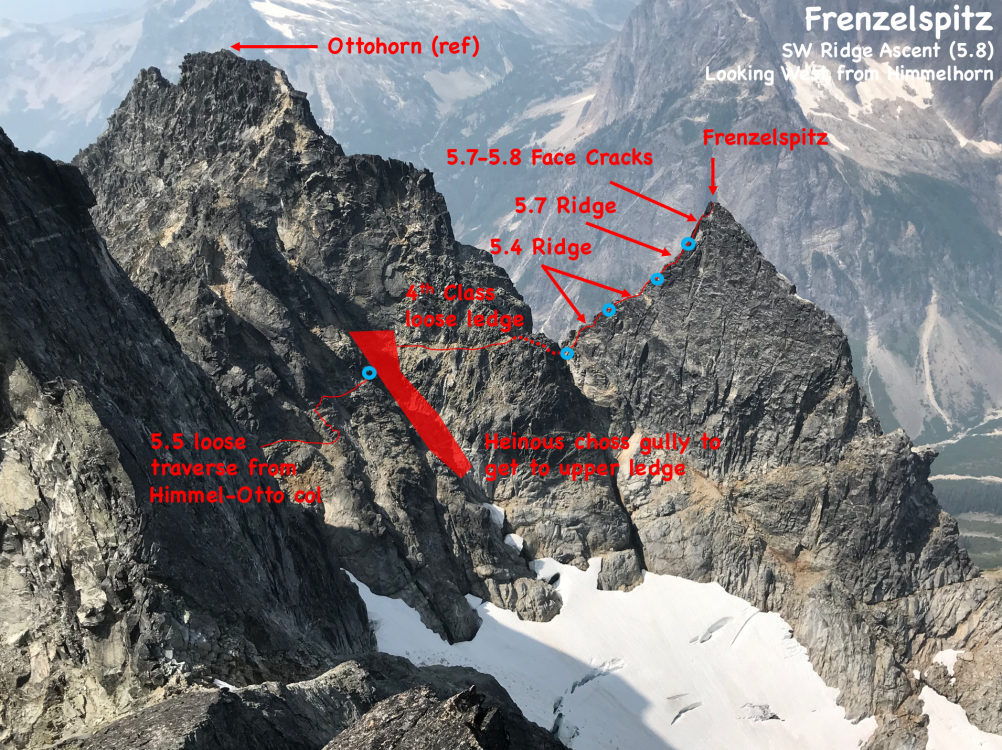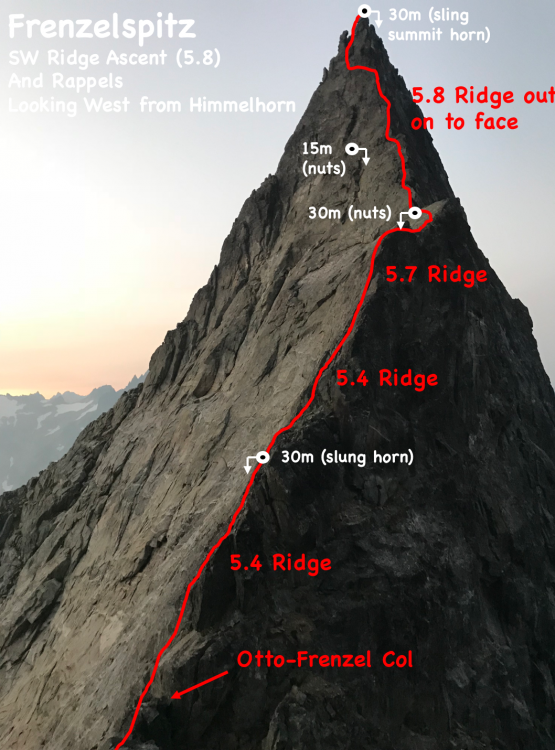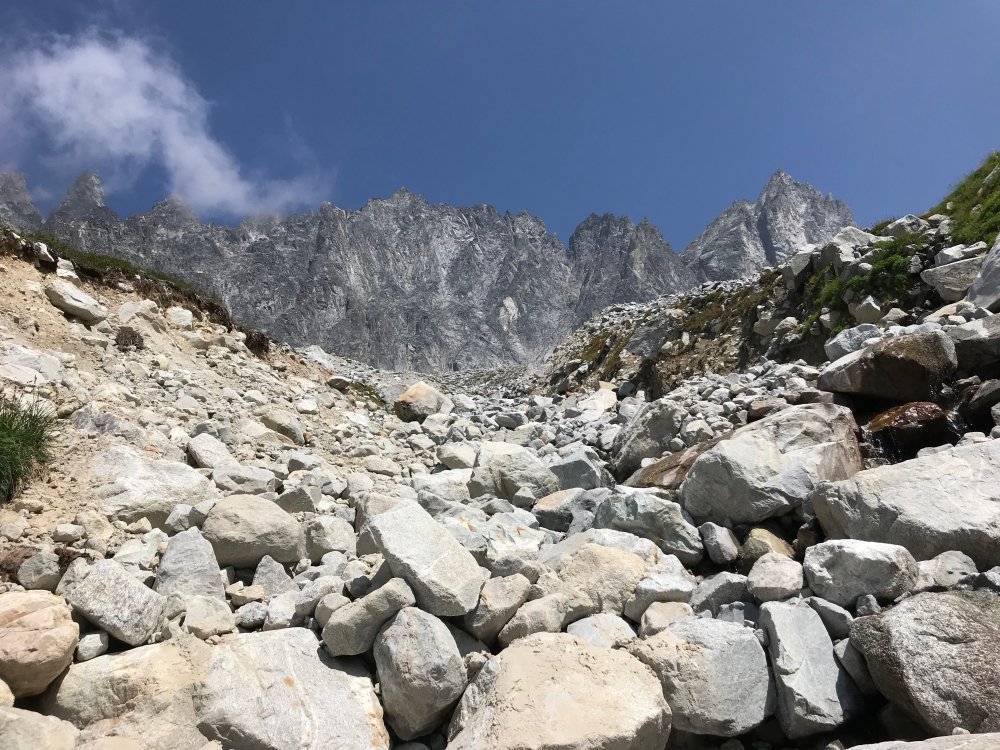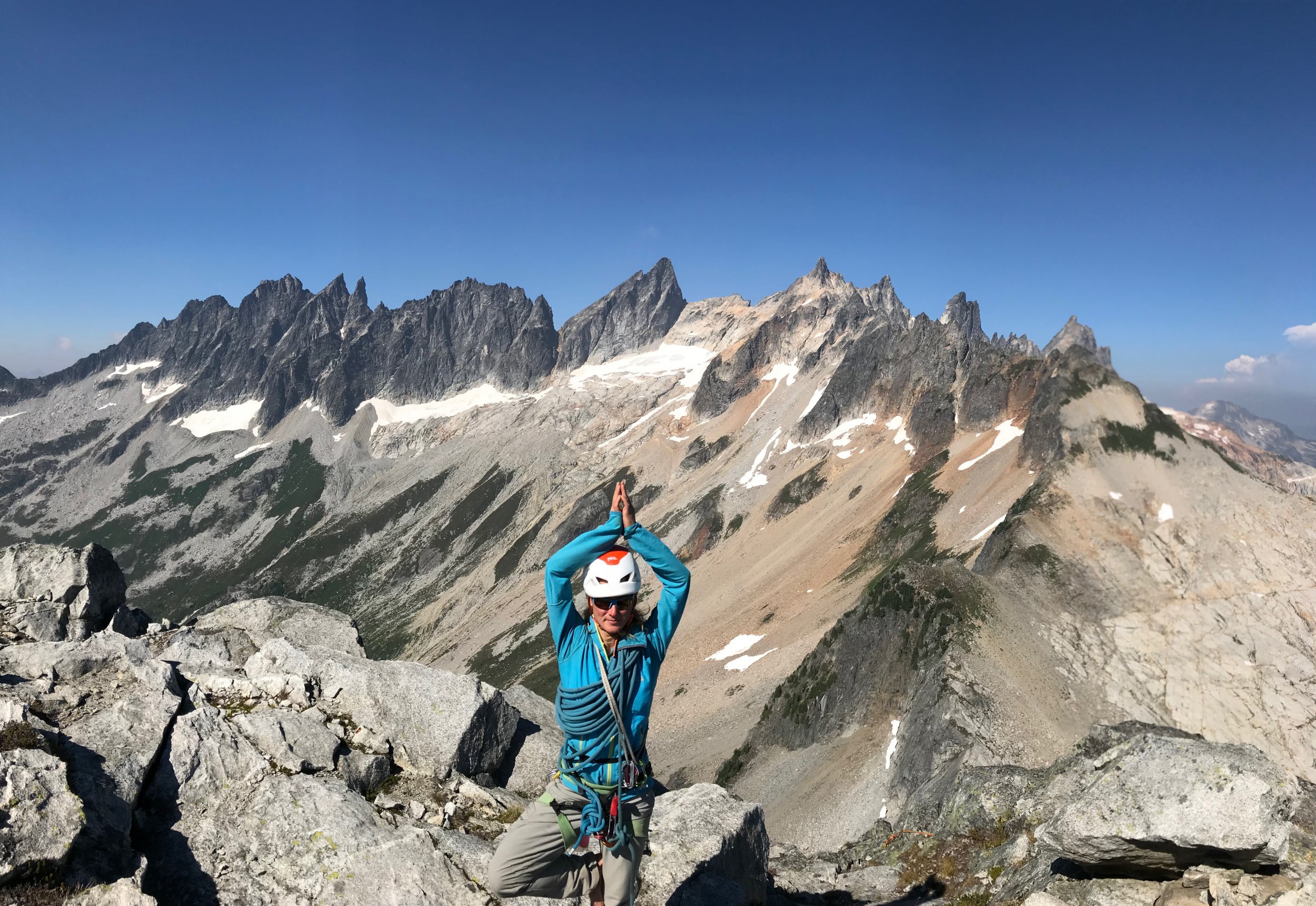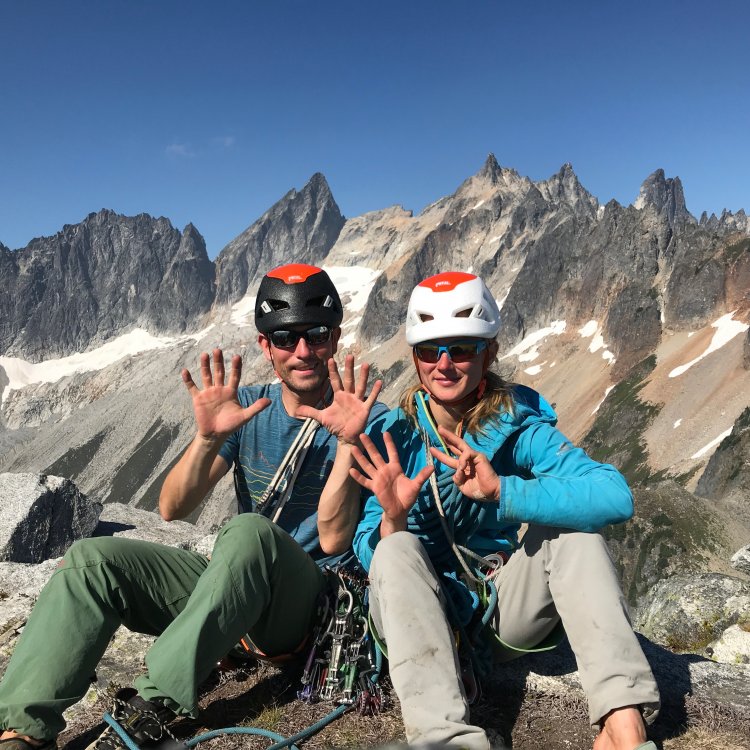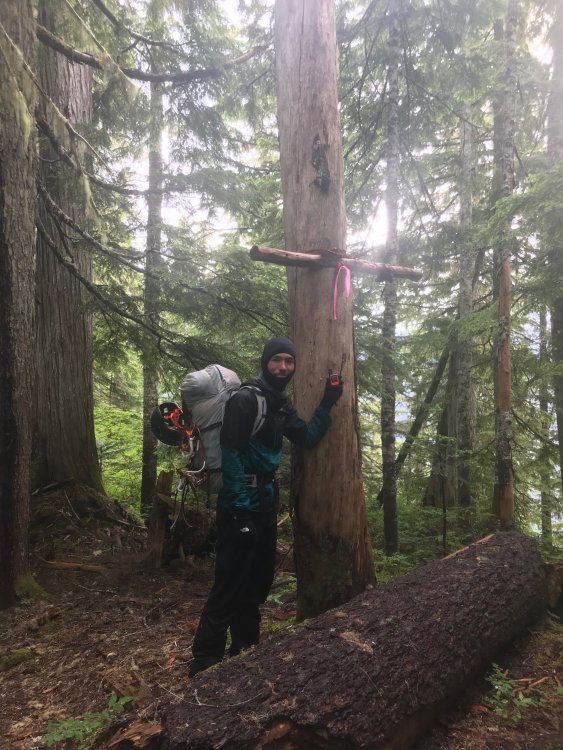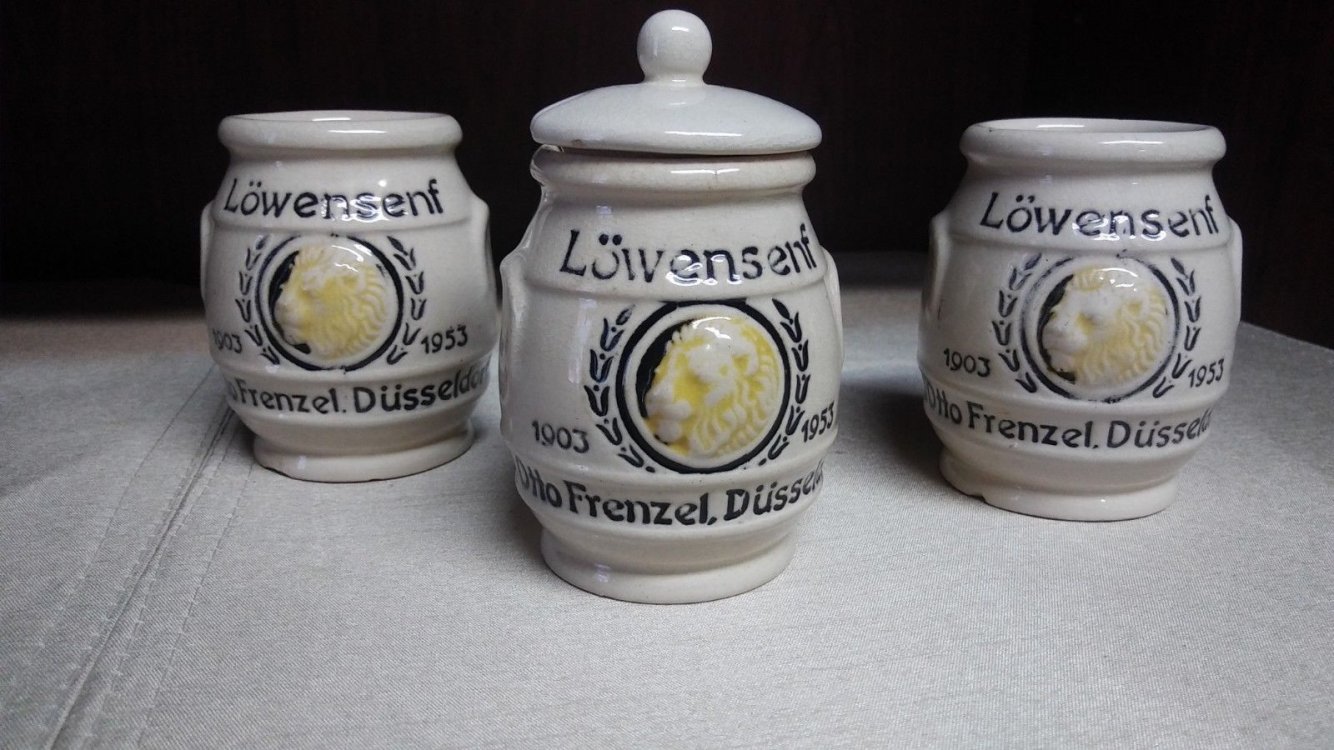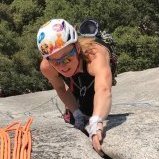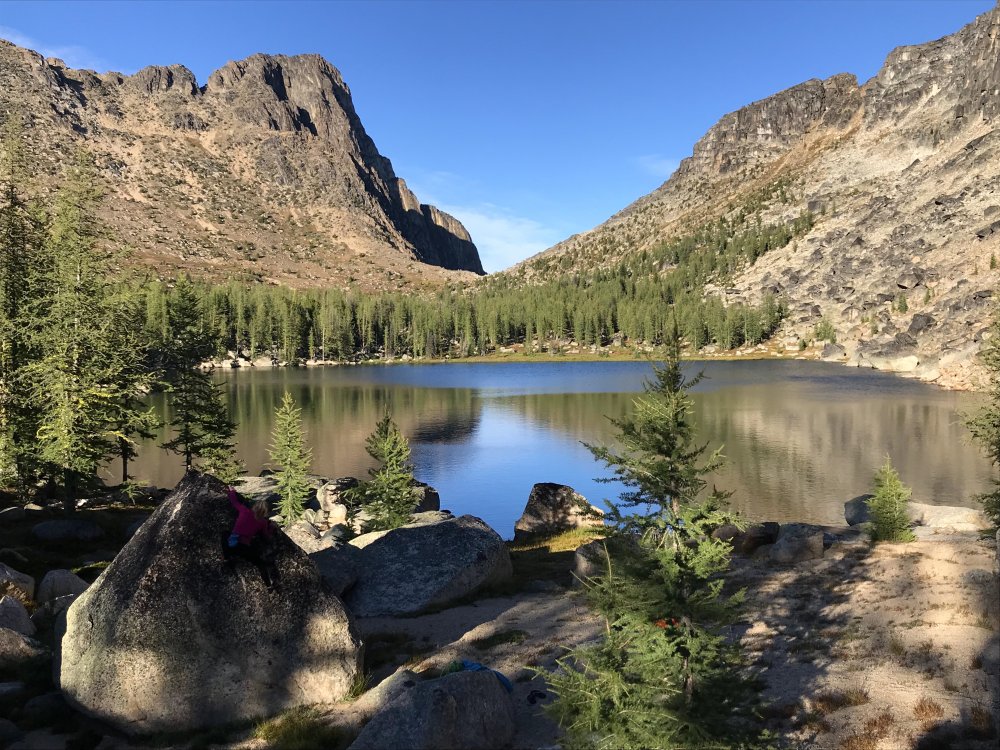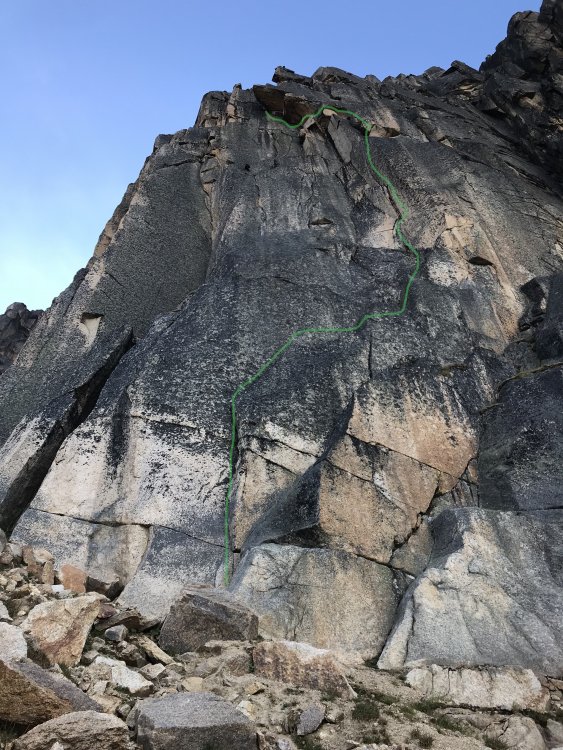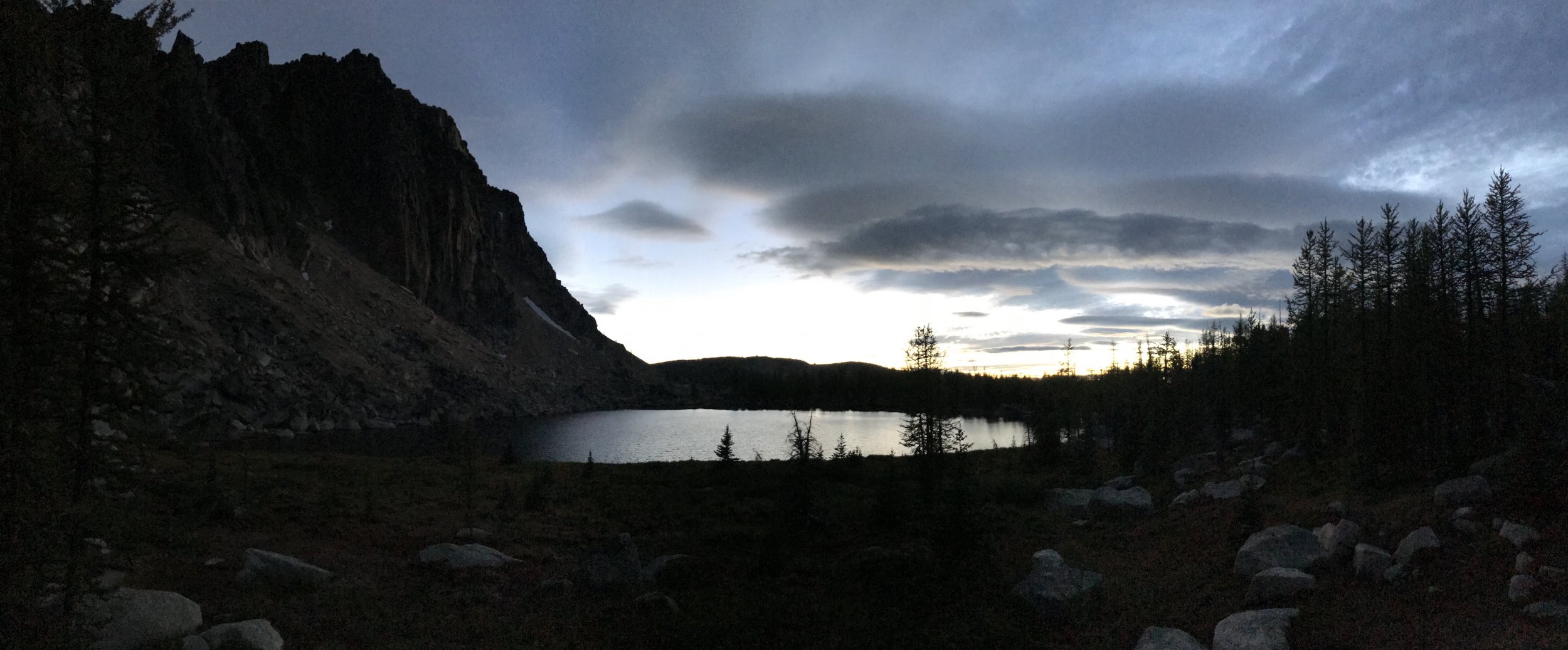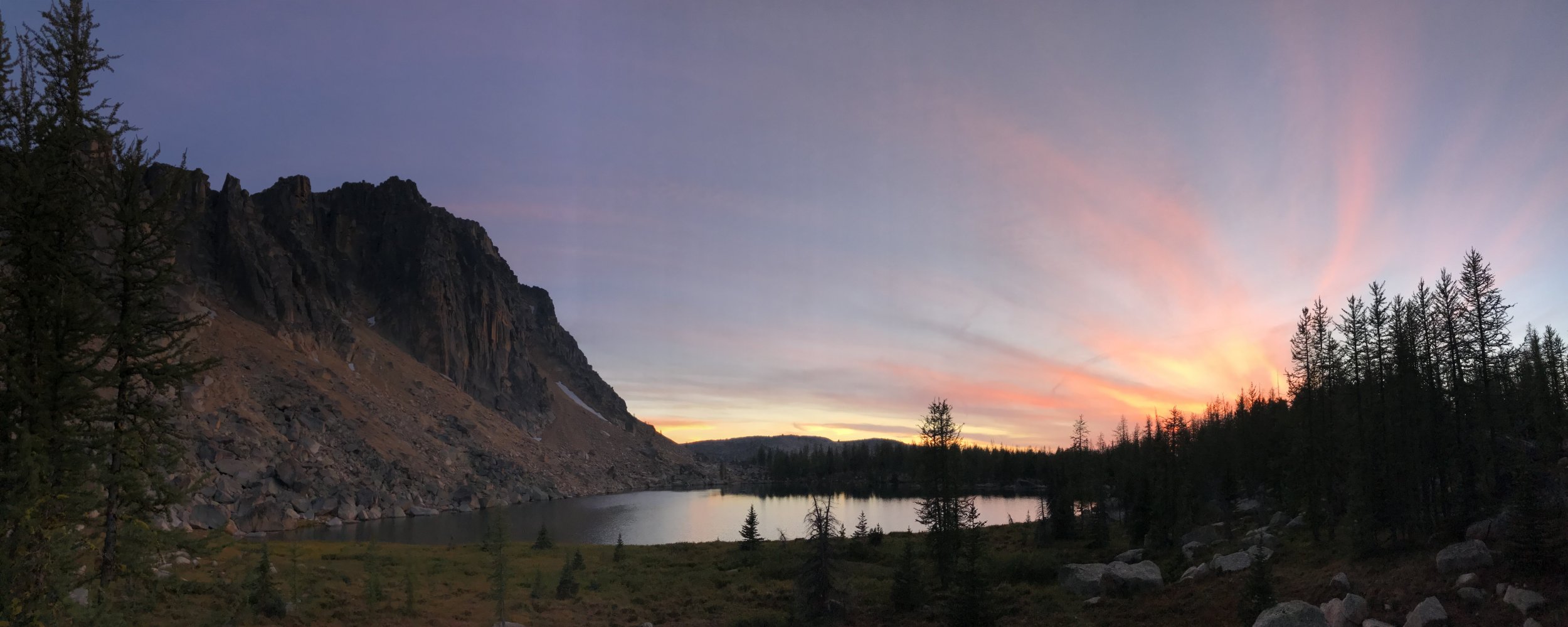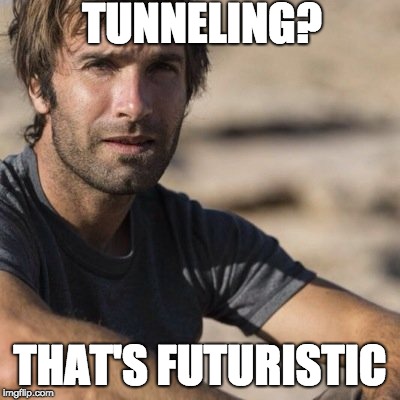Leaderboard
Popular Content
Showing content with the highest reputation on 09/06/18 in all areas
-
Trip: North Cascades - Southern Pickets - Southern Pickets Enchainment (Traverse) – Second Ascent Trip Date: 08/17/2018 Trip Report: Climbers/Scribe/Photos: Jeff and Priti Wright Priti and I completed the Second Ascent of the full Southern Pickets Enchainment (Traverse) between 8/12/2018 and 8/17/2018 via the first ascensionists’ agenda (VI 5.10+, ca. 3 miles). Thirteen peaks in four days staying on technical terrain enchaining every peak in the Southern Picket Range from East to West. The Chopping Block was our 14thpeak on the last day à la Bunker-Haley-Wallace. We were lucky to have splitter weather the whole time except for our approach day which was non-stop drizzling and kept us from jumping on the rock right away. We had previously attempted this climb during the July 4thweek earlier this summer but were stormed off at the base of Mount Terror. View of the entire Southern Pickets from Mount Triumph. Photo Credit: James Blackmon (1) Little Mac Spire, (2) East McMillan Spire, (3) West McMillan Spire, (4) Tower 1 summit of the East Towers aka "Don Tower", (5) Tower 5 summit of East Towers, (6) Inspiration Peak, (7) Pyramid Peak, (8) Mount Degenhardt, (9) Mount Terror, (10) The Rake aka "The Blob", (11) The Blip, (12) East Twin Needle, (13) West Twin Needle, (14) Dusseldorfspitz, (15) Himmelhorn, (16) Ottohorn, (17) Frenzelspitz, and (18) The Chopping Block The Chopping Block is on the left. History: FA: In 2003, this visionary line of 13 summits (Little Mac Spire to Frenzelspitz) was first completed by Mark Bunker, Colin Haley, and Wayne Wallace in an incredibly speedy 4 days car-to-car. http://c498469.r69.cf2.rackcdn.com/2004/34_wallace_pickets_aaj2004.pdf https://cascadeclimbers.com/forum/topic/15094-walking-the-fence/ 2011: Dan Hilden, Jens Holsten, and Sol Wertkin completed 12 of the Southern Pickets summits (Little Mac Spire to Ottohorn), but were halted by an impassable moat under the South Face of the final bookend peak, Frenzelspitz (a lesson we borrowed to not take the snow approach). https://www.outdoorresearch.com/blog/article/chad-kellogg-jens-holsten-tackle-complete-picket-range-enchainment http://www.alpinist.com/doc/web15s/wfeature-never-ending-holsten-kellogg https://cascadeclimbers.com/forum/topic/82900-tr-picket-range-complete-enchainment-attempt-922011/?tab=comments#comment-1029444 2013: Jens Holsten and Chad Kellogg traversed 11 of the Southern Pickets summits (Little Mac Spire to Himmelhorn), and carried on to the Northern Pickets to do a mind-blowing Southern and Northern Pickets traverse. Even though Jens humbly calls their climb an “attempt” since they left out three minor summits, their ascent was easily one of the greatest alpine achievements in the lower 48. https://cascadeclimbers.com/forum/topic/92032-they-made-it/?tab=comments#comment-1101276 http://jensholsten.blogspot.com/2013/07/desperate-country-seven-day-enchainment.html https://www.outdoorresearch.com/blog/article/chad-kellogg-jens-holsten-tackle-complete-picket-range-enchainment Legend In the topos below, note the following color codes -Blue circle: belays that we chose to take (all are optional, obviously) -Yellow arrows: Bail options, or ways to enter/exit shorter segments of the Enchainment -Green tent: bivy sites (note the comments) -Red lines: Ascent -White circles: Rappels -White lines: Descent Day 1 With our packs each weighing in at 28lbs, we hiked in to Terror Creek Basin via Goodell Creek through wet bushes and a light drizzle and bivied at the Terror Creek Basin High Camp. Day 2 As we roped up at the base of the start (Little Mac Spire) on Day 2, Priti glumly pulled two left-footed red Moccasym rock shoes out of her pack, but decided to keep going like the hardcore badass that she is! We climbed from Little Mac Spire (5.8) through East McMillan Spire (5.6), West McMillan Spire (5.8), the East Towers (5.8) summiting Don Tower and Tower 5, and finishing the day with Inspiration Peak (5.9). We had to climb up 1/3 of Pyramid to find a small snow patch for water and dinner. On our last trip in early July there was a lot of snow at the cols, so it was easy to find water. There was a lot less snow in the cols in August, making finding water along the traverse very tricky, to say the least. We filled our dromedary up every time we found snow. The smoke made the views hazy, but we could tell how far away the later peaks were, and how far we had to go. The base of Little Mac Spire The start of the technical climbing (5.7) on the face of Little Mac Spire The upper ridge of East McMillan Spire View looking West in July View looking West in August Upper face of West McMillan Spire Starting up Tower 1 Priti is belaying below Pitch 2 (5.8 with a hand/fist overhang) Inspiration Peak Summit is the impressive overhang on the left Day 3 On Tuesday (day 2 of climbing, day 3 of the trip), we started out on Pyramid (5.8), and traversed over Degenhardt (3rd class). We chose a steep face crack for the first pitch on Terror to start. This may be the 5.8 start Jens and Chad did. Starting further out left might go at 5.6. After finding the piton rappel off Terror, we downclimbed about half of the Rake-Terror col before starting up a loose gulley on The Rake (skier’s right). The climbing didn’t feel too hard, and we must have avoided the 5.9 R climbing described by previous parties. However we didn’t make it to the nice bivy at the summit, instead hunkering down on a slopey grassy ledge for the night. Snafflehounds poked me in the face and jumped on my feet to start the night out. The meteor shower sparkled above us. In the morning, Jeff found his helmet strap had been gnawed through, his crack gloves stolen and the nut butter munched. Nothing a little duct tape won’t fix! Starting up the technical climbing on Pyramid Peak Inside the crux chimney Day 4 On Wednesday (day 3 of climbing, day 4 of the trip), we only climbed for a few hours doing lots of fun ridge climbing on the Rake (5.8) which took us to the best bivy spot of the trip: on top of the West Rake Summit. It was so nice, we decided to relax the rest of the day and camel up for the next day. The choosy 4th class gully which exits the Terror-Rake col (about halfway down) on climber's right The entire Rake ridgeline is pictured here. Priti is on the initial ridgeline, heading to the Rake's deep, major notch (right of center). Stay high on this initial ridge to get to a 5.6 traverse about even with the notch to get over to the notch. Starting the traverse too soon may result in 5.9R climbing. The vertical ridgeline just left of the major notch is the technical crux. The technical crux of The Rake. This is the second pitch after getting to the major notch which takes you to the The Rake's ridge proper. 5.8+ ledges with small gear. Starting out on the Rake's ridge proper. Looking back at the Rake (Eastward) from the summit Guns out! Amazing bivy site! Don't stop at the col (aka "Ice Station Dark Star"), but continue to this bivy after a short pitch. Day 5 Thursday morning we woke up stoked for the Twin Needles and Himmelgeisterhorn. The Blip between the Rake and the Needles was a quick jaunt (5.6). In the descent gulley, Priti kicked a small rock down, which tipped a precarious car-door sized boulder over and core-shot our rope. She literally had two left feet! We just climbed the rest of the way with 40m of rope out. East Twin Needle (5.10a) had some of the best climbing on the trip, following an aesthetic line up the knife edge ridge, that looks like a gothic tower. There was a TCU that the previous party stuck behind a flake, and was reminded of the giant footsteps we were following. The last couple moves were extremely dirty though. The left variation of the crux is much easier than sticking right. West Twin Needle was chill 3rd Class. Then came Himmelgeisterhorn (5.10), the “Horn of the Sky Spirit”. The climbing was fantastic: engaging, with great position, and unique au chevaling! We climbed over Düsseldorfspitz, on the way to the summit of Himmelhorn. We rappelled down the North Face of Himmelhorn with our 60m rope which worked out perfectly. Ottohorn took about an hour to summit and get back down to the Himmel-Otto col. The 3rdclass route that Bunker-Haley-Wallace took is gone due to some fresh rock fall. Instead of taking the 2 pitch 5.7 variation that Hilden-Holsten-Wertkin took, we attacked the fresh rock scar directly which was splitter 5.6 hand cracks for maybe 15 m to the ridge and summit. In the fading light, we then headed over to Frenzelspitz (the final peak of the Enchainment) from the Himmel-Otto col, traversing along rock on the north side of Ottohorn. The ledge/gulley traverse had the most heinous, scary, exposed choss. Luckily the climbing on Frenzel was pretty great 5.7ish. We made four fresh rappel anchors, starting with a runner on the summit block, two double-nut anchors, and another slung horn. 5.8 ridge (vertical blocks) The fantastic climbing on the technical crux of East Twin Needle. Priti leading out onto the technical crux (and I mean technical!) - face climbing on crimps with small gear Looking up and over Dusseldorfspitz. Priti is belaying between Dusseldorfspitz (foreground) and Himmelhorn (background). The crazy outcropping (Dusseldorfspitz) just East of the summit of Himmelhorn Looking back down from the Himmelhorn summit at the belay. Left to right: Dusseldorfspitz (the small spire along the ridgeline, just below the summit), Himmelgeisterhorn ("Horn of the Sky Spirit", also a small suberb of the German city of Dusseldorf), Ottohorn, and Frenzelspitz...three names taken from the label of a mustard bottle brought along by Joan and Joe Firey (kindred spirits and personal heroes of ours) during their first ascent of these peaks in 1961. Ed Cooper, also on the trip, was "aghast" at the names chosen! The magnificent Northern Pickets Frenzelspitz, a perfect pyramid Day 6 The last day we climbed the Chopping Block via the NW Route (4thClass) and hiked out via “Stump Hollow” to Terror Creek. Mega thanks to Wayne, @solwertkin, and @jensholsten for their great beta, inspiration, and support. Priti and I have been dreaming of this climb for years now since reading Alpinist 47 magazine’s expansive article on the Picket Range and being inspired by Jens Holsten and Chad Kellogg’s 2013 Pickets Traverse (of both the Southern and Northern Pickets, 10 miles) after we had just taken the @boealps Basic Climbing Class. The next level of alpinism in the Southern Pickets may be to complete the entire enchainment in a day! This seems like an entirely reasonable feat (especially for a soloist) given enough familiarity and speed. Bivy Beta: Primo bivies (East to West) base of West McMillan Spire descent (snow through the summer, nice bivy walls) base of Mount Terror, cross over ridge to North side - late season snow available on top of the Rake sub-peak (1 pitch past the “Ice Station Dark Star”) – lots of snow just a short scramble distance away along the Rake descent. Himmel-Otto col (if no snow on the col, make one rappel toward Crescent basin to find snow) Terrible bivies (East to West) base of East McMillan Spire descent (sloping ledges, snow early season) slabby ledge about 1/4 the way up the Inspiration West Ridge (exposed) Pyramid-Inspiration col (no snow late season) grassy ledges down and climbers left when you first gain the ridge proper at the start of the Rake “Ice Station Dark Star” (as coined by Hilden-Holsten-Wertkin) which is the col after just rappelling from The Rake summit (snow early season, but rappel north late season to find snow down a heinous choss gully)…if no snow just at the col, then recommend continuing on to the Rake descent to find tons of easily accessible snow in late season Himmelhorn summit (no snow) Gear Notes: small set of nuts and some brassies doubles BD UL Camalots .4-2 single BD UL Camalot 3 (for Inspiration East Face) singles BD C3 000-1 (extra green 0) single BD Camalot X4 Offset 0.1/0.2 single BD Camalot X4 0.3 singles Metolius Mastercam 0-3 4 double-length runners with 2 Camp 22 biners each 3 double-length runners with 1 Camp 22 biner each 9 single-length runners with 1 Camp 22 biner each (can’t have too many runners) 30L Patagonia Ascensionist pack (for him) and 30L Black Diamond Speed pack (for her) Patagonia Micro Puff jacket (each) Patagonia Alpine Houdini jacket (each) Patgaonia Nano-Air Light Hybrid Jacket (for him) 2L MSR DromLite (essential!) Garmin inReach Mini (love this little guy!) Beal Escaper (for emergency bails) Petzl Leopard FL crampons (each) Petzl Sirocco helmets Petzl Sitta harness (for him) and Arc’teryx harness (for her) Metolius Feather Nut Tool (each) Camp Corsa Nanotech 50cm (each) chalk bag, each (didn’t use) tape gloves (for her) and OR Splitter gloves (for him) x2: Mammut Smart belay device (not the Alpine Smart) + Grivel Sigma Wire D carabiner 3 lockers for group: Grivel Tau K12L, Grivel Lambda HMS, Grivel Plume 60m 8.5mm Beal Opera rope 15m 5mm cord (did not use ever) 1 medium fuel canister 1 small fuel canister (did not use) Jetboil Sol stove Safety ‘biner (each) – Edelrid 19g caribeener, Petzl Micro Traxion, short Sterling Hollowblock, Trango Piranha knife Bivy setup (each) – Short Thermarest NeoAir XLite sleeping pad, Exped Air Pillow UL, Feathered Friends Vireo UL sleeping bag 8.5ft^2 tarp by Hyperlite Mountain Gear TC Pros (for him) and Moccassyms (for her) La Sportiva TX2 (for her) and TX4 (for him) approach shoes Petzl Reactik headlamps (each) + 3 extra AAA batteries + Petzl e+LITE headlamp Other things: 1 long spoon to share, chapstick to share, small Joshua Tree sun stick to share, Kenu iPhone tether, lighter, whistle, duct tape, Thermarest repair patches, Voke tabs, Nuun, pain killers, 1L Platypus soft water bottle (for her) and 750mL HydraPak Stash (for him), warm headband, glove liners, 1 pair thick long socks (each), sunglasses, ear plugs, WRFA emergency form, small pencil Dinner: 2 AlpineAire meals, 3 Near East Couscous boxes repackaged with small olive oil packets in ziplock bags, salt Day food was mostly bulky, yummy snacks: vegan jerky, dried mango, nuts, Cheese-Its, sesame sticks, Gu, nut butter, etc Approach Notes: Excellent Approach trail Goodell Creek to Terror Basin. The descent from Crescent Basin is tricky The luxurious tree marker where one descends from the ridge below "Stump Hollow" towards Terror Creek Log crossing Terror Creek on descent1 point
-
Trip: Pasayten Wilderness - Cathedral and Amphitheater - SE Buttress of Cathedral Peak and Finger of Fatwa on Middle Finger Buttress on Amphitheatre Mountain Trip Date: 08/31/2018 Trip Report: Ethan and I climbed the classic SE Buttress (5.10a) on Cathedral Peak on Saturday Sept 1st and The Finger of Fatwa (5.11c) on the Middle Finger Buttress on Amphitheatre Mountain on Sept 2nd. The SE buttress was super enjoyable, following an obvious aesthetic line up the peak, on beautiful, sunny rock. One other party was in front of us, and let us pass at the headwall. The Finger of Fatwa follows a striking line, up a steep splitter .5” crack and traversing a set of two wild left-pointing roofs. I'm curious who else has climbed it since 2011 when Scott Bennett and Blake Herrington put it up. I don’t think this route gets much attention, judging by the amount of moss. But it should get done more! It’s so cool! We didn't get the red-point, but if we cleaned it up a bit, I think it would go next time! Belay under the roof Pulling the roof: A little bit of bouldering capped the trip! The weather was questionable on Saturday, but cleared up around 10am. We hiked out in a light snow on Monday, that cleared up to blistering heat by the time we reached the trailhead. Saturday sunset: Sunday sunset: Gear Notes: Wires, Doubles from tips to #2, single #3, #4 Coffee every damn morning! Approach Notes: 8-10 hours approach via Andrew's Creek Trailhead ... From Upper Cathedral lake, a 15-45 minutes approach1 point
-
Trip: Denali - Cassin Ridge (Alaska Grade V, 5.8, AI4, 8,000ft), Alpine Style* Trip Date: 06/09/2018 Video: Between June 2 and June 11, Priti and I climbed the Cassin Ridge on the South Face of Denali approaching via the NE Fork of the Kahiltna Glacier (the “Valley of Death”), spending 6 days on route (including 1 rest/weather day at 17,700ft), summiting on June 9, and descending the West Buttress route. The whole trip was 10 days 7 hours door-to-door from Seattle. The Cassin Ridge is the second most popular route on Denali, with an average of 9 successful climbers each year, compared to an average of 584 successful climbers each year on the West Buttress route over the past decade. We carried everything up and over, climbing Ground-Up, with 38lbs packs each at the start, no sleds, and moving camp as we climbed, without caches. It was a Smash ’n’ Grab, meaning we decided to go at the last minute when we saw a good weather window. We watched Denali weather every day since early May until there was about a week of good weather. It took 24 hours from being at work on a Friday afternoon deciding to pull the trigger to being at Kahiltna Base Camp (including packing, Ranger orientation, flights, etc). We climbed Rainier 3 times the month and a half before our trip (Gib Ledges, Kautz, and Liberty Ridge), sleeping in the summit crater the weekend before. Still, we took Diamox while on Denali and had 2 weeks of food/fuel in case we felt altitude on route. Luckily, we had no altitude issues, and were only bounded by our own fitness, weather, and desire to move only when the sun was on us. Overall, weather was windless, clear, and sunny during the days with a few flurries at night. It was an “old-school” style of climbing, slow and heavy, while most folks nowadays opt to acclimatize on the West Buttress and climb the Cassin Ridge starting from 14,000ft camp on the West Buttress, then climb light-and-fast via the Seattle ’72 ramp or the West Rib (Chicken Gully) in a few days — this was our plan for our attempt last year with Ilia Slobodov, but didn’t get the weather window. Overall, a very successful trip, and we’re so excited to have pulled it off, after 3 years of dreaming of this route. *Alpine Style: The route was completed Alpine Style with the following exceptions: -Snowshoes were cached at Camp 1 in case the lower Kahiltna Glacier was sketchy on the way back. Didn’t really ever need snowshoes. The NE Fork was boot-able. There weren’t tracks going up the NE Fork, but it was wanded to the base of the West Rib. -We clipped into the existing fixed lines on the West Buttress descent above 14k, but this was unnecessary since it was basically a staircase. We didn’t clip into the existing pickets on the Autobahn above 17k. Google Street View: Apparently, nobody had done a 360 Photo Sphere Google Street View of the summit of Denali, so we obliged https://www.google.com/maps/@63.0690675,-151.0060278,3a,75y,78.91h,50.18t/data=!3m7!1e1!3m5!1sAF1QipOR4OLfMm5iBn15nn4OdiMbVTWa7lwk40pPUlnH!2e10!3e12!7i8704!8i4352 Itinerary: -June 2: Arrived at Kahiltna Base Camp at 3:00PM and moved to “Safe Camp” in the NE Fork of the Kahiltna Glacier (“Valley of Death”). We cached snowshoes at Camp 1 and took a right turn up the NE Fork. This “Safe Camp” is the widest part of the NE fork, where you are least threatened by avalanches and serac-fall sweeping the entire valley floor. -June 3: Hiked from "Safe Camp" halfway down the Valley of Death and climbed the Japanese Couloir and camped on Cassin Ledge with a sweeping view of Kahiltna Peaks and the entire NE Fork. -June 4: Climbed the 5.8 crux, Cowboy Arete, and Hanging Glacier, camping at the Hanging Glacier Bergschrund at the Base of the First Rock Band -June 5: Woke up to Colin Haley strolling by our bivy site on his 8hr7min speed ascent of the Cassin Ridge (he approached via the East Fork of the Kahiltna Glacier). This was a total surprise and very inspiring see him up there! We climbed the First Rock Band that day and bivied between the First and Second Rock Band just next to the rib. -June 6: Climbed the Second Rock Band and found the crux to be the sustained "Hidden Rock Couloir" at the entrance, which is sustained mixed 70-80deg for about 50m. At the end of the Second Rock Band, a Chilean Team of 2, plus Colin Haley, plus our team of 2 all took the wrong (harder) exit. From the overhanging triangle, we all traversed right about 40ft then went straight up, finding difficulties to M4-M5. We should have traversed right another 40ft or so to find the 5.6 slab pitches and the 5.6 dihedral as described in Super Topo. This ended the technical difficulties of the route. That night, we bivied at Mark Westman’s “excellent bivy site” at 17,700ft. This turned out to be very hard to find and we spent several hours looking around for it. It is way further up and right on the col than expected. -June 7: Lots of snow! So we decided to sleep all day, acclimatize and waiting out the weather. -June 8: So much snow accumulated on the upper mountain the previous day that it took us over 12 hours to ascend the final 2,500ft to Kahiltna Horn. We were knee to waist deep almost the entire day. Mark Westman told us later that he was watching us all day through the high-powered scope from Kahiltna Base Camp and he could see the long trench we left in our wake. Presumably, many day-tourists at Base Camp watched us in our embarrassing slog to the top. This was by far the hardest day of the trip! When we reached Kahiltna Horn at 10:30PM, we had no energy to go to the summit, so we slept on the “Football Field” at 20,000ft. The night was beautiful, calm, and cold! -June 9: Went back up to tag the summit, then descended 12,500ft to Camp 1. -June 10: Got to Kahiltna Base Camp from Camp 1 at 10:00AM but it was overcast all day so TAT could not come and pick us up. -June 11: TAT finally picked us up around noon, after we endured the most miserable and wettest night of the entire trip! Left to Right: Sultana (Mount Foraker), Begguyya (Mount Hunter), Denali Denali, the High One Heading into the NE Fork of the Kahiltna Glacier (the "Valley of Death"), the West Rib visible up the center of the peak The West Rib in the Center, The Cassin Ridge roughly up the right skyline Closer up view of the Cassin Ridge. The Japanese Couloir is the gash on the right. The Cowboy Arete (Knifedge Ridge) is above, followed by the First and Second Rock Bands Looking back at the West Rib and the Chicken Couloir Looking up the Japanese Couloir and the bergschrund at the base of the Cassin Ridge Looking back at the NE Fork Looking up at the crux of the Japanese Couloir (AI4) The Cassin Ledge. Razor thin, great views fo the whole NE Fork, Kahiltna Peaks, and Sultana! The 5.8 Crux just off the Cassin Ledge The Cowboy Arete The Base of the Hanging Glacier, the Cowboy Arete behind A short overhanging step to get over the bergshrund Colin Haley approaches! The crux of the First Rock Band, just above the M-rocks Somewhere near the top of the First Rock Band The South Face! Looking up at the "Hidden Rock Couloir", the beginning of the Second Rock Band, and the crux of the route, in my opinion Just below the V-shaped overhang in the Second Rock Band Slog to the top Denali Summit Ridge Summit Marker The Football Field on the West Buttress Route and our bivouac Heading down the Autobahn, 17k camp below on the West Buttress The Cowboy Arete Base Camp with Moonflower Buttress behind (North Buttress of Begguyya, Mount Hunter) Gear Notes: -6 screws (1x21cm, 2x17cm, 3x13cm) -40m rope -Small Rack of nuts -5 cams (.3-1) -2 pickets (didn’t use on route; just for glacier travel) -5 single alpine draws, 2 double alpine draws (no cordalette) -2 ice tools each (Nomics for him, X-Dream for her) -Monopoint crampons -Boots: Olympus Mons for him, G2SM+overboots for her -MSR AdvancePro2 Tent -Feathered Friends Spoonbill Sleeping Bag -2x Thermarest NeoAir Xtherm + 1x shorty closed cell foam pad (for emergency) -MSR Reactor + hanging kit + 3 medium cans of isopro Approach Notes: Approached via the NE Fork of the Kahiltna Glacier1 point
-
9/4 - day 29 - lap 25 - sweet god, simple good-old-fashioned normality returns after far too long - my 20th first day of school, at least as a professional, and for the first time ever i genuinely could say to the hormonal masses "i'm glad to see you" as the alternative was too awful to contemplate - beacon breezy and balmy, the haze so thick hood was half-visible on the ambulation in - an easy ascent, all alone, the fear of death like water over hot stone, bubbling off and evaporating in an instant - if this is suddenly to be the end, after all these tribulations, then who couldn't be eager for it, rather than face the far more terrifying descent into disuse and decay old age must inevitably entail?1 point
-
Trip: Cathedral Provincial Park / Pasayten - Faith FA, Sentinel Direct, Grimface traverse Date: 7/19/2015 Trip Report: Unstable weather in the Bugaboos sent us to Pasayten via Cathedral Provincial Park, and at Blake's recommendation we focused our attention on the Deacon. It was a fantastic trip. We repeated the Sentinel Direct route, did the first ascent of Faith (5.10, 6 pitches, grade III, ground-up, onsight) on a cliff that we don't think has been climbed before, and finished with a classic ridge traverse on Matriarch, Macabre, and Grimface. Team shot at the trailhead. There is more fuel in the Wall Creek forest than I've seen anywhere. It's just a matter of time before the whole area explodes in a firestorm. Be careful. We lost the trail in a swampy area and were escorted up valley by a squadron of black flies. Yes, they're trying to bite you, but don't let them get into your head or you're going to be miserable. Zen. [video:youtube] The forest gave way to alpine meadows ringed by granite towers. The natural beauty of this area is just as inspiring as the climbing. Meditating on the hard-won view while ignoring the cloud of flies. At the trailhead, I discovered I'd left my sleeping bag in Seattle. Oops. A few layers of extra clothes and our tent made the nights bearable, but Brandon spurned my spooning overtures, so I usually woke up around 4 when it was too cold to sleep. By 5 it was getting light anyway. Dawn among the larches. The meadows come to life. We headed for the Deacon, a North-facing cliff with a few routes. We did Sentinel Direct, which starts in the right-facing dihedral on the left side of the wall. Brandon lead the first pitch, a lovely splitter crack and corner. Brandon lead the second pitch in good style. It involved an awkward move into a small corner with 5.10 fingerlocks before escaping left to a more moderate hand crack. I made the mistake of pulling out on a crack getting into the corner and pulled off a toaster-sized block. We both launched off the wall. The rope caught me and the block sailed to the talus below. The third pitch was a 5.7 blocky, rampy, chimney to the top of a tower. I started on my block by leading a fun 5.9 stem pitch. Apparently you're supposed to traverse right on a ramp before the top of the offwidth crack. I ended up doing a hand traverse and heel hook to get past a large wobbly block guarding the belay without weighting it. The next 10- pitch was fun face and flake climbing. It's important to always maintain 3 points of contact. Very serious business, this climbing is. A 5.10 face move led to a nice chimney. I lead a 70m 5.8 rope stretcher and Brandon took us quickly up another blocky pitch to the top. Thunder boomed around us as we unroped and headed for the summit. There is some fantastic, exposed block hopping to get you past a tower over to the summit. When I raised my hand at the summit it buzzed from the electric charges in the air. Time to go down. Cathedral Peak was getting soaked but it looked like we might stay dry. Or not. [video:youtube] We quickly headed down the E gully, which we learned is quite friendly even when wet. The evening cloud formations were beautiful and bizarre. And the sunset was lovely. The next morning we got an earlier start and focused our attention on an unclimbed line we'd spied on the large cliff to the right of the Deacon. We're calling this cliff the Bishop, because the central feature looks like a giant chess piece or pointy church official. It's the same height as the Deacon and has clean, steep rock. Our line went up an obvious corner on the right side of the cliff just right of where I'm pointing. I lead up a series of corners and small roofs on super clean rock. 5.9 45 meters. One of several good, short corners on the pitch. Around 35 meters I escaped right up a clean, blocky buttress leading to a large ledge. Brandon lead the second pitch, which had one 5.9 move and continued for 35 meters to a small belay. Future parties could link this with the first part of pitch 3. I then lead up the third pitch, stepping right onto a lovely but unprotected buttress next to a super thin crack. I was able to garden just enough gear placements to make this safe and arrived at a giant ledge after 60 feet. Above us, the cracks looked like dead ends or unprotectable seams. And the rock was steep. We thought if we traversed left toward the main wall we might find a passage. Bailing would not be easy as there were not a lot of cracks up here, but we had faith something would work out. At a large ledge I headed left for about 50 feet, including a couple of exposed moves, to a good belay at a ledge and crack. We'd call pitch 3 5.7R, 30 meters. Following the first part of the third pitch before the ledge traverse. Brandon continued left, not sure if anything would go. He worked his way up and left past the left end of a large roof. This was the key to the route. It opened up a magical passage on a rightward trending ramp through otherwise steep and blank terrain. Pitch 4 ran 5.7R, 45 meters to another giant ledge. We moved the belay left 80 feet and up 20 feet to the base of a corner below several cracks. I chose the one that went straight up from the belay. It turned out to be quite physical. At the crux, I had a crappy heel/toe cam, my hands on rounded holds, and had to blindly place a #3 in a flare. I find that the best climbing experiences are the ones where the outcome is in doubt but you somehow keep it together and succeed. I was unsure if I would send or whip off this pitch until I sank my hand into a great jam just below the lip in this photo. 25 meters, 10c. Brandon lead a wonderful series of hand cracks that went straight to the top of the wall. A finish with an explanation point! 35 meters, 5.10a. It's hard to explain the feeling of launching up a wall into the unknown. I've only done it a few times, but it's not like any other type of climbing I've experienced. You must solve the physical and mental puzzles of climbing and placing all your own gear as you go, as with any trad onsight, but you also have to figure out where the route should go, how to handle loose rock, what gear to save that you might need above, and how much risk you are willing to take. It's about having faith in your partner, faith in your abilities and experience, faith in the gear, faith in the rock, faith that you'll be able to piece together a clean line to the top, and faith that you can back off safely if necessary. Not blind faith, mind you, but faith borne out of experience and a deep awareness of each of these elements. As you climb, a stream of details are gathered by the conscious mind and merged with a river of intangibles that filter in through the peripheral subconsciousness of your mind's eye. They combine, as in a flow state, and turn thoughts into actions. Actions into experience. Experience into memory. The satisfaction that comes from a ground-up, onsight, multi-pitch route worthy of repeat ascents runs deeper than words can convey. It is the joint creation of the climber as artist and the natural canvas of the rock. Authorship is shared. It is vertical wilderness exploration. There is only so much you can see from the ground. You have to go for it to see what will emerge. The world is not completely known, despite what the internet might lead you to believe. Adventures can still be found by those who seek them. Partnership makes it richer still, a shared experience. I am deeply grateful for all of these. This time there was no thunderstorm. We marveled at the summit tower and dreamed of future lines on the wall. The backside of the mountain is a low angle plateau with great views of Cathedral and many other peaks. More alpine wild flowers. The descent was a super easy walk down a solid low angle ridge to the Northeast back to Deacon's basin. The next morning we tried a new route on another cliff, but what looked good from a distance turned out to be vegetated and unpleasant up close. So we down climbed and headed off to do the Matriarch, Macabre, Grimface traverse. It was a lovely and relaxed afternoon outing in our approach shoes. There are lots of interesting rock features, bolts where you need them, And great views on a perfect summer afternoon. More wildflowers. Views of the Deacon and Bishop are in the upper right, with Cathedral in the background. The perfect end to a perfect trip. A chill in the air socked in the peaks as we left for home. The climbing is stunning here, but the nature was even more inspiring. Please tread lightly if you visit this pristine wilderness. Back at the car, we were eager to dive into the river and start planning our return. Special thanks to Blake for providing great suggestions and Brandon for being the perfect partner, even if he does hog the only sleeping bag! We had an odd conversation at the US Border at Sumas: Border guard: Where do you live? US: Seattle, Mt Vernon. Border Guard: Do I know you? Have you come through here before? Me: We were here a few weeks ago, were you here? Border Guard: No. Are you wanted anywhere? Me: (Pause) Just at home by our wives. Border Guard: Well, don't hurry back. He handed our passports back and waved us through. We ignored his advice and hurried home to our loved ones. Gear Notes: Doubles to #3 Camalot plus single #4 Camalot. We had a 70 meter rope, but a single 60 meter cord will suffice. A sleeping bag would be nice! Approach Notes: Approach via Wall Creek. Stay on the trail on the East side of Wall Creek. There are good campsites in the top of the basin. Please keep this area pristine.1 point
-
Since Cathedral SE Buttress is one of the best routes I've done, and the headwall is better than the Gendarme on the NR of Stuart, here's some precise beta overload. I felt that the Beckey/Kearney guides were extremely vague at best. p1- Start on the right edge of a block/pinnacle 150' up the Monk/Cathedral gulley. LFC and wide crack for ~50m to a huge ledge (5.8+) p2 - Up the obvious chimney beneath solid chockstones for ~15m, then step right into a corner. Climb up the steep corner crack (easier than it looks) or belay at the chimney exit to avoid rope drag. (5.8) p3 - Up the same corner crack feature, pass a small ledge or two. The last section of this features a short wide crack off a ledge. Stay to the right as you near the top. (5.8) This next section might have a couple options, and is the most confusing of the route p4 - From a nice cushy ledge that wraps around the buttress, go up a short obvious crack angling to the left, then stem up twin cracks near a corner, finally move left to the base of a quartz dike crack with huge crystals, and climb this to the last ledge. (5.8) p5 - Walk to the FAR LEFT of the sandy ledge, and layback straight up, staying to the left when possible. Climbing becomes steppy, until a chimney appears on the right, which protects well with solid small gear inside. Belay atop chimney. (5.9) p6 - Climb up and left on mid-5th terrain towards the looming headwall. 60m (5.7) p7 - Continue up slightly steeper terrain and splitter cracks to the base of the headwall. 30m (5.8) p8 - Follow finger/hand cracks straight up to a small stance at the base of the OW. The deadly-looking block is fairly solid. 30m 5.9 p9 - Punish yourself on the 1970s 5.9+ OW (#4/#5 camalot), or else take the .10a finger splitter just to the right. 25m (5.10) p10 - 5.9 splitter hand crack for ~8m, then walk left on a ledge for a few feet, and up a final 5.9 splitter hand crack. ~30m (5.9) (we did it in 11 pitches, with a belay atop the chimney due to rope drag.) Descent is a bit of solid scrambling, then a walk off to Cathedral Pass.1 point


